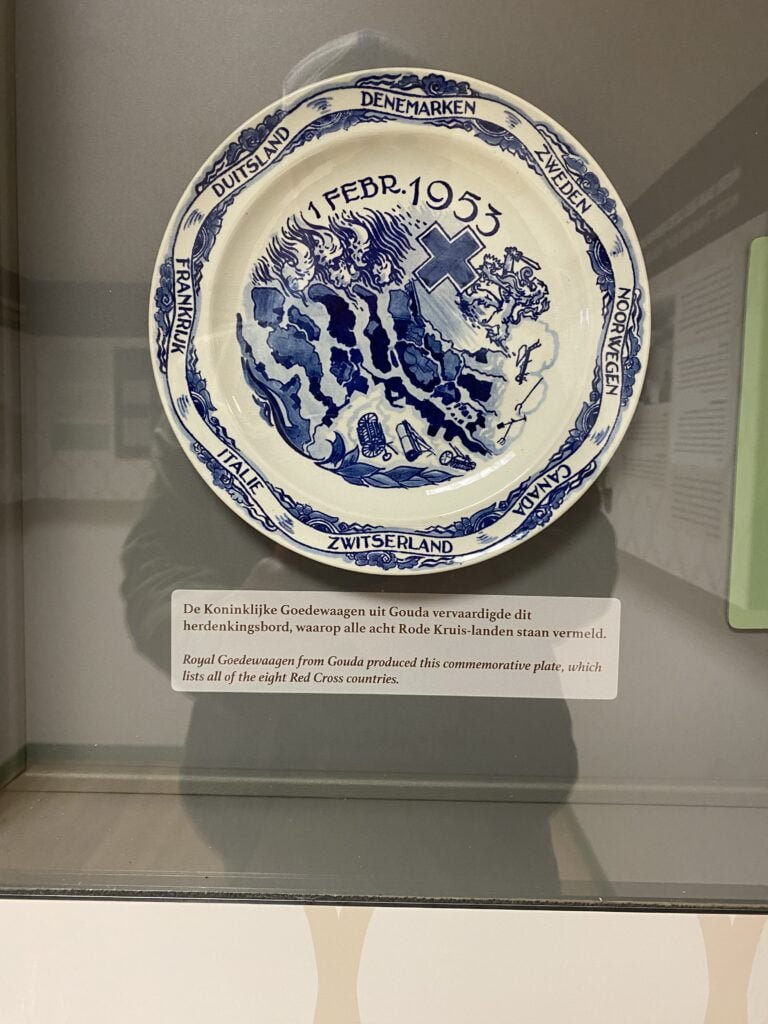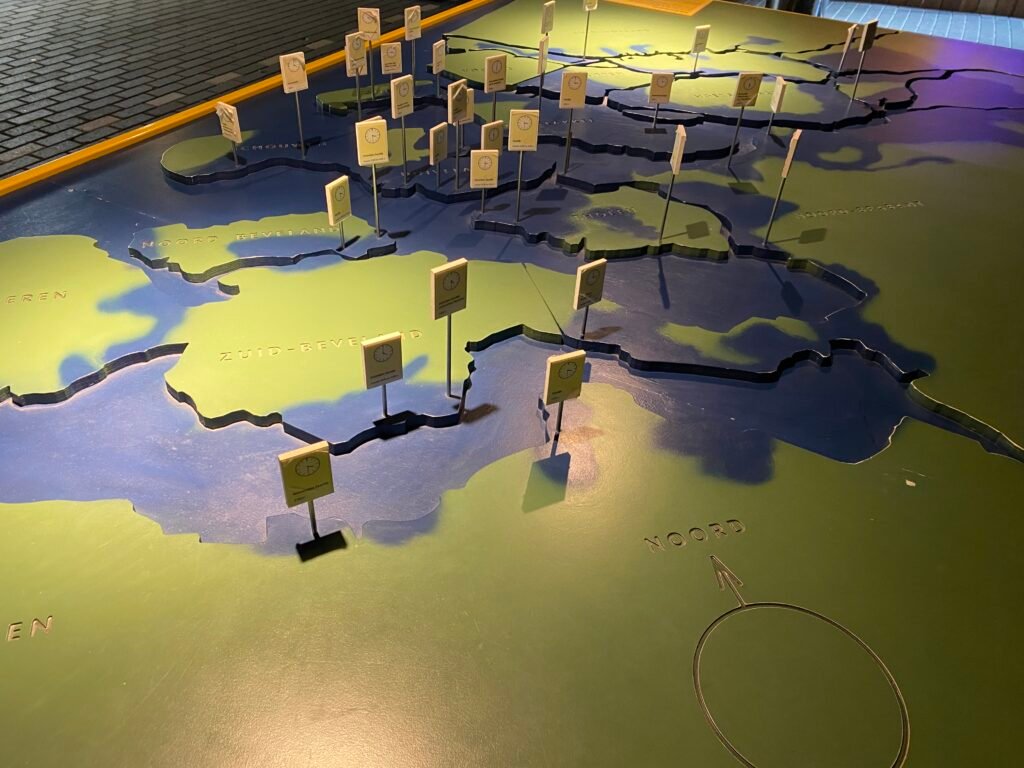Vous pouvez lire le billet sur le blog La Minute pour plus d'informations sur les RSS !
Canaux
4010 éléments (8 non lus) dans 54 canaux
 Dans la presse
(2 non lus)
Dans la presse
(2 non lus)
 Toile géomatique francophone
(6 non lus)
Toile géomatique francophone
(6 non lus)
 Géomatique anglophone
Géomatique anglophone
-
sur PostGIS Development: PostGIS 3.4.3
Publié: 4 September 2024, 2:00am CEST
-
sur Oslandia: (Fr) Variabilisez vos profils QGIS avec QDT
Publié: 3 September 2024, 6:42pm CEST
Sorry, this entry is only available in French.
-
sur Fernando Quadro: Inteligência Artificial, GIS e Smart Cities
Publié: 3 September 2024, 2:00pm CEST
As cidades inteligentes representam o futuro da vida urbana, integrando tecnologia e soluções baseadas em dados para aumentar a eficiência, a sustentabilidade e a qualidade de vida dos residentes. No centro do desenvolvimento das cidades inteligentes está o papel da inteligência artificial (IA) nos Sistemas de Informação Geográfica (GIS), revolucionando a forma como as cidades planejam, otimizam e gerem infraestruturas críticas, como redes de transporte, serviços públicos e serviços públicos.
Nesta postagem falaremos um pouco sobre o papel multifacetado da IA ??no GIS para o planejamento de infraestrutura de cidades inteligentes, com foco em suas implicações e benefícios para o desenvolvimento urbano.
O planeamento de infraestruturas de cidades inteligentes abrange uma vasta gama de elementos, desde sistemas de transporte inteligentes e serviços públicos energeticamente eficientes até serviços públicos responsivos e desenvolvimento urbano sustentável. O GIS alimentado por IA desempenha um papel fundamental neste processo, aproveitando dados espaciais, análises preditivas e monitoramento em tempo real para otimizar o projeto, operação e manutenção de infraestrutura para cidades inteligentes e resilientes.
 Aplicações de IA no planejamento de infraestrutura de cidades inteligentes:
Aplicações de IA no planejamento de infraestrutura de cidades inteligentes: Otimização de Transporte
Otimização de Transporte
 Gestão de Utilidades e Eficiência Energética
Gestão de Utilidades e Eficiência Energética
 Prestação de serviço público
Prestação de serviço público
 Monitoramento Ambiental e Sustentabilidade
Monitoramento Ambiental e Sustentabilidade Benefícios da IA ??no planejamento de infraestrutura de cidades inteligentes:
Benefícios da IA ??no planejamento de infraestrutura de cidades inteligentes: Maior eficiência e otimização de recursos
Maior eficiência e otimização de recursos
 Tomada de decisão baseada em dados
Tomada de decisão baseada em dados
 Melhor experiência do cidadão e qualidade de vida
Melhor experiência do cidadão e qualidade de vida
 Desenvolvimento Sustentável e Resiliência
Desenvolvimento Sustentável e ResiliênciaEmbora a IA traga benefícios significativos para o planeamento de infraestruturas de cidades inteligentes, desafios como a privacidade de dados, a segurança cibernética, a parcialidade dos algoritmos, a conformidade regulamentar e a equidade digital precisam de ser abordados. Isto requer quadros de governação robustos, envolvimento das partes interessadas, práticas éticas de IA e estratégias de planeamento urbano inclusivas para o desenvolvimento equitativo e sustentável de cidades inteligentes.
Concluindo, o SIG alimentado por IA está a transformar o cenário do planeamento de infraestruturas de cidades inteligentes, oferecendo oportunidades sem precedentes de eficiência, sustentabilidade e inovação no desenvolvimento urbano. Ao aproveitar as capacidades da IA, as cidades podem otimizar a infraestrutura, melhorar a prestação de serviços e criar ambientes urbanos mais habitáveis ??e resilientes para as gerações vindouras. Adotar a IA no planejamento de cidades inteligentes não se trata apenas de avanço tecnológico – trata-se de construir cidades mais inteligentes, mais conectadas e sustentáveis ??que beneficiem a todos.
Fonte: webgis.tech
Instagram: [https:]]
LinkedIn: [https:]]
-
sur Mapping Moving Borders in Real-Time
Publié: 3 September 2024, 11:56am CEST par Keir Clarke
The international border between Italy and Switzerland & Austria in the Alps largely follows the path of the watershed line. Unfortunately due to global heating and shrinking glaciers the Alpine watershed line keeps on moving. The result is that the border between Italy and its Alpine neighbors is also constantly moving.In 2016 the Italian Limes project attempted to track the movement of the
-
sur Mappery: Pijnacker-Nootdorp
Publié: 3 September 2024, 11:00am CEST

Eric said “Today I visited the municipality of Pijnacker-Nootdorp. There’s a beautiful #mapsinthewild carpet in the Council Chamber (with even half of Delft on it)”

MapsintheWild Pijnacker-Nootdorp
-
sur Sean Gillies: August 22, 2018: Paris in a Day
Publié: 3 September 2024, 1:16am CEST
Six years ago my family and I spent some time in France, passing through Lyon and Paris on the way back to Colorado. While Ruth stayed behind at a conference in Montpellier, Arabelle, Bea, and I did Paris in a day. We saw many bones, ate much gelato, hiked many stairs, rode many trains and buses, and enjoyed being together, seeing new places, and using our second language in one of the world's capitals. I cherish my memories of this day. I felt like I was killing the fun Francophile dad role and thoroughly enjoyed the company of my kids. I had a memorable time. We confirmed in June that Arabelle and Bea have strong, positive memories, as well.
I went to Instagram for the first time in years to dig up a photo taken on that day that I haven't published on my blog before.

A child in a blue top making a peace sign in front of the Eiffel Tower and waxing moon.
We didn't go back to the Trocadero in June, assuming that it was closed for Olympics construction, but we did go back to Montmartre and Sacre Coeur. Both Arabelle and Bea have been cultivating Spanish as a third language since 2018 and had a chance to use it on our recent visit. We encountered a Spanish kid of Bea's age who had been separated from her parents and kept her company until we could reach her mom on the phone. She had no phone of her own, but had memorized key numbers.
-
sur Fernando Quadro: PostGIS e a Inteligência Artificial
Publié: 2 September 2024, 10:13pm CEST
No atual cenário empresarial acelerado, aproveitar os dados de localização pode proporcionar uma vantagem competitiva significativa. Desde a otimização da logística e das rotas de entrega até à melhoria das experiências dos clientes através de serviços baseados em localização, a capacidade de extrair informações valiosas de dados geográficos é fundamental.
Como você já deve saber o PostGIS é uma extensão de código aberto amplamente utilizada que adiciona suporte para objetos geográficos, permitindo que consultas SQL espaciais sejam executadas dentro do sistema de gerenciamento de banco de dados PostgreSQL. O Postgres-AI, por outro lado, é uma extensão introduzida recentemente que traz recursos de aprendizado de máquina (ML) diretamente para o PostgreSQL, permitindo treinamento e inferência de modelos no banco de dados.
A integração do PostGIS e do Postgres-AI abre inúmeras possibilidades para inteligência de localização e análise de dados espaciais, incluindo:
 Seleção de sites de varejo e análise de mercado
Seleção de sites de varejo e análise de mercado
 Logística e otimização da cadeia de suprimentos
Logística e otimização da cadeia de suprimentos
 Modelagem preditiva para serviços baseados em localização
Modelagem preditiva para serviços baseados em localização
 Planejamento urbano e desenvolvimento de infraestrutura
Planejamento urbano e desenvolvimento de infraestrutura
 Monitoramento ambiental e esforços de conservação
Monitoramento ambiental e esforços de conservação
 Marketing direcionado e segmentação de clientes
Marketing direcionado e segmentação de clientesAo aproveitar essas ferramentas poderosas, as organizações podem tomar decisões baseadas em dados, otimizar operações e aprimorar sua compreensão de padrões e relacionamentos geográficos, ao mesmo tempo em que aproveitam o poder do aprendizado de máquina.
Fonte: webgis.tech
Instagram: [https:]]
LinkedIn: [https:]] -
sur Mappery: Around the Globe
Publié: 2 September 2024, 11:00am CEST

From Reinder “… the title means something like ‘Around the globe’. Needs no further explanation I presume” – nope!
MapsintheWild Around the Globe
-
sur Land doesn't vote, people do!
Publié: 2 September 2024, 10:05am CEST par Keir Clarke
Engaging Data has updated its US County Electoral Map – Land Area vs Population map so that you can now zoom in and explore the election results in each state. The map allows you to see the 2020 Presidential Election election results at the county level based on land area or population size.If you select the 'Population' button on the map then the colored proportional circles change size to
-
sur TorchGeo: v0.6.0
Publié: 1 September 2024, 12:12pm CEST
TorchGeo 0.6.0 Release NotesTorchGeo 0.6 adds 18 new datasets, 15 new datamodules, and 27 new pre-trained models, encompassing 11 months of hard work by 23 contributors from around the world.
Highlights of this release Multimodal foundation modelsThere are thousands of Earth observation satellites orbiting the Earth at any given time. Historically, in order to use one of these satellites in a deep learning pipeline, you would first need to collect millions of manually-labeled images from this sensor in order to train a model. Self-supervised learning enabled label-free pre-training, but still required millions of diverse sensor-specific images, making it difficult to use newly launched or expensive commercial satellites.
TorchGeo 0.6 adds multiple new multimodal foundation models capable of being used with imagery from any satellite/sensor, even ones the model was not explicitly trained on. While GASSL and Scale-MAE only support RGB images, DOFA supports RGB, SAR, MSI, and HSI with any number of spectral bands. It uses a novel wavelength-based encoder to map the spectral wavelength of each band to a known range of wavelengths seen during training.
The following table describes the dynamic spatial (resolution), temporal (time span), and/or spectral (wavelength) support, either via their training data (implicit) or via their model architecture (explicit), offered by each of these models:
Model Spatial Temporal Spectral DOFA implicit - explicit GASSL implicit - - Scale-MAE explicit - - TorchGeo 0.6 also adds multiple new unimodal foundation models, including DeCUR and SatlasPretrain.
Source Cooperative migrationTorchGeo contains a number of datasets from the recently defunct Radiant MLHub:
- AgriFieldNet Competition Dataset
- Smallholder Cashew Plantations in Benin
- Sentinel-2 Cloud Cover Segmentation Dataset
- CV4A Kenya Crop Type Competition
- Tropical Cyclone Wind Estimation Competition
- Marine Debris Dataset for Object Detection in Planetscope Imagery
- Rwanda Field Boundary Competition Dataset
- South Africa Crop Type Competition
- SpaceNet Datasets
- Western USA Live Fuel Moisture
These datasets were recently migrated to Source Cooperative (and AWS in the case of SpaceNet), but with a completely different file format and directory structure. It took a lot of effort, but we have finally ported all of these datasets to the new download location and file hierarchy. As an added bonus, the new data loader code is significantly simpler, allowing us to remove 2.5K lines of code in the process!
OSGeo community projectTorchGeo is now officially a member of the OSGeo community! OSGeo is a not-for-profit foundation for open source geospatial software, providing financial, organizational, and legal support. We are in good company, with other OSGeo projects including GDAL, PROJ, GEOS, QGIS, and PostGIS. Membership in OSGeo promotes advertising of TorchGeo to the community, and also ensures that we follow best practices for the stability, health, and interoperability of the open source geospatial ecosystem.
All TorchGeo users are encouraged to join us on Slack, join our Hugging Face organization, and join us in OSGeo using any of the following badges in our README:
Lightning Studios supportTorchGeo has always had a close collaboration with Lightning AI, including active contributions to PyTorch Lightning and TorchMetrics. In this release, we added buttons allowing users to launch our tutorial notebooks in the new Lightning Studios platform. Lightning Studios is a more powerful version of Google Colab, with reproducible software and data environments allowing you to pick up where you left off, VS Code and terminal support, and the ability to quickly scale up to a large number of GPUs. All TorchGeo tutorials have been confirmed to work in both Lightning Studios and Google Colab, allowing users to get started with TorchGeo without having to invest in their own hardware.
Backwards-incompatible changes- All Radiant MLHub datasets have been ported to the Source Cooperative file hierarchy (#1830)
- GeoDataset: the bbox sample key was renamed to bounds in order to support Kornia (#2199)
- Chesapeake7 and Chesapeake13: datasets were removed when updating to the 2022 edition (#2214)
- Benin Cashews and Rwanda Field Boundary: remove
os.path.expanduserfor consistency (#1705) - LEVIR-CD and OSCD:
imageskey was split intoimage1andimage2for change detection (#1684, #1696) - EuroSAT:
B08Awas renamed toB8Ato match Sentinel-2 (#1646)
- aws-cli: to download datasets from AWS (#2203)
- azcopy: to download datasets from Azure (#2064)
- prettier: for YAML file formatting (#2018)
- ruff: for code style and documentation testing (#1994)
- radiant-mlhub: website no longer exists (#1830)
- rarfile: datasets rehosted as zip files (#2210)
- zipfile-deflate: no longer needed for newer Chesapeake data (#2214)
- black: replaced by ruff (#1994)
- flake8: replaced by ruff (#1994)
- isort: replaced by ruff (#1994)
- pydocstyle: replaced by ruff (#1994)
- pyupgrade: replaced by ruff (#1994)
- python: 3.10+ required following SPEC 0 (#1966)
- fiona: 1.8.21+ required (#1966)
- kornia: 0.7.3+ required (#1979, #2144)
- lightly: 1.4.5+ required (#2196)
- lightning: 2.3 not supported due to bug (#2155, #2211)
- matplotlib: 3.5+ required (#1966)
- numpy: 1.21.2+ required (#1966), numpy 2 support added (#2151)
- pandas: 1.3.3+ required (#1966)
- pillow: 3.3+ required (#1966), jpeg2000 support required (#2209)
- pyproj: 3.3+ required (#1966)
- rasterio: 1.3+ required (#1966)
- shapely: 1.8+ required (#1966)
- torch: 1.13+ required (#1358)
- torchvision: 0.14+ required (#1358)
- h5py: 3.6+ required (#1966)
- opencv: 4.5.4+ required (#1966)
- pycocotools: 2.0.7+ required (#1966)
- scikit-image: 0.19+ required (#1966)
- scipy: 1.7.2+ required (#1966)
- AgriFieldNet (#1873)
- CaBuAr (#2235)
- ChaBuD (#1259)
- Digital Typhoon (#1748)
- EuroSAT Spatial (#2074)
- GeoNRW (#2209)
- I/O Bench (#1972)
- LEVIR-CD (#1770)
- LEVIR-CD+ (#1707)
- QuakeSet (#1997)
- Sentinel-2 + CDL (#1889)
- Sentinel-2 + EuroCrops (#1869)
- Sentinel-2 + NCCM (#1950)
- Sentinel-2 + South America Soybean (#1959)
- South Africa Crop Type (#1970)
- VHR-10 (#1082)
- Remove torchgeo.datamodules.utils.dataset_split (#2005)
- EuroSAT: make sure normalization is actually applied (#2176)
- Fix plotting in datamodules when dataset is a subset (#2003)
- AgriFieldNet (#1459)
- Airphen (#1803)
- CaBuAr (#2235)
- ChaBuD (#1259)
- CropHarvest (#1677)
- Digital Typhoon (#1748)
- EuroCrops (#1813)
- EuroSAT Spatial (#2074)
- GeoNRW (#2209)
- I/O Bench (#1972)
- LEVIR-CD (#1770)
- Northeast China Crop Map (#1666)
- PRISMA (#1743)
- QuakeSet (#1997)
- SkyScript (#2253)
- South Africa Crop Type (#1840)
- South America Soybean (#1668)
- SpaceNet 8 (#2203)
- Benin Cashews: migrate to Source Cooperative (#2116)
- Benin Cashews: remove
os.path.expanduserfor consistency (#1705) - BigEarthNet: fix broken download link (#2174)
- CDL: add 2023 checksum (#1844)
- Chesapeake: update to 2022 edition (#2214)
- ChesapeakeCVPR: reuse NLCD colormap (#1690)
- Cloud Cover: migrate to Source Cooperative (#2117)
- CV4A Kenya Crop Type: migrate to Source Cooperative (#2090)
- EuroSAT: rename
B08AtoB8Ato match Sentinel-2 (#1646) - FireRisk: redistribute on Hugging Face (#2000)
- GlobBiomass: add min/max timestamp (#2086)
- GlobBiomass: use float32 for pixelwise regression mask (#2086)
- GlobBiomass: fix length of dataset (#2086)
- L7 Irish: convert to IntersectionDataset (#2034)
- L8 Biome: convert to IntersectionDataset (#2058)
- LEVIR-CD+: split
imageintoimage1andimage2for change detection (#1696) - NASA Marine Debris: migrate to Source Cooperative (#2206)
- OSCD: support fine-grained band selection (#1684)
- OSCD: split
imageintoimage1andimage2for change detection (#1696) - PatternNet: redistribute on Hugging Face (#2100)
- RESISC45: redistribute on Hugging Face (#2210)
- Rwanda Field Boundary: don't plot empty masks during testing (#2254)
- Rwanda Field Boundary: migrate to Source Cooperative (#2118)
- Rwanda Field Boundary: remove
os.path.expanduserfor consistency (#1705) - SpaceNet 1–7: migrate to Source Cooperative (#2203)
- Tropical Cyclone: migrate to Source Cooperative (#2068)
- VHR-10: redistribute on Hugging Face (#2210)
- VHR-10: improved plotting (#2092)
- Wester USA Live Fuel Moisture: migrate to Source Cooperative (#2206)
- Add support for
pathlib.Pathto all datasets (#2173) - Datasets can now use command-line utilities to download (#2064)
- GeoDataset:
bboxkey was renamed tobounds(#2199) - GeoDataset: ignore other bands for separate files (#2222)
- GeoDataset: don't warn about missing files for downloadable datasets (#2033)
- RasterDataset: allow subclasses to specify which resampling algorithm to use (#2015)
- RasterDataset: use nearest neighbors for int and bilinear for float by default (#2015)
- RasterDataset: calculate resolution after changing CRS (#2193)
- RasterDataset: support date_str containing % character (#2233)
- RasterDataset: users can now specify the min/max time of a dataset (#2086)
- VectorDataset: add
dtypeattribute to match RasterDataset (#1869) - VectorDataset: extract timestamp from filename to match RasterDataset (#1814)
- IntersectionDataset: ignore 0 area overlap (#1985)
- DatasetNotFoundError: when a dataset has not yet been downloaded (#1714, #2053)
- DependencyNotFoundError: when an optional dependency is not installed (#2054)
- RGBBandsMIssingError: when you try to plot a dataset but don't use RGB bands (#1737, #2053)
- RandomGeoSampler: fix performance regression, 60% speedup with preprocessed data (#1968)
- I/O Bench (#1972)
- Explicitly specify batch size (#1928, #1933)
- MoCo: explicitly specify memory bank size (#1931)
- Semantic Segmentation: support
ingore_indexwhen using Jaccard loss (#1898) - SimCLR: switch from Adam to LARS optimizer (#2196)
- SimCLR: explicitly specify memory bank size (#1931)
- Use Kornia's AugmentationSequential for all model weights (#1979)
- Update TorchGeo's AugmentationSequential to support object detection (#1082)
- Datasets: add license information about every dataset (#1732)
- Datasets: update link to cite SSL4EO-L dataset (#1942)
- Models: emphasize new multimodal foundation models (#2236)
- Trainers: update num_classes parameter description (#2101)
- Add button for the new Lightning Studios (#2146)
- Remove button for the recently defunct Planetary Computer Hub (#2107)
- Custom Raster Datasets: download the dataset before calling super (#2177)
- Custom Raster Datasets: fix typo (#1987)
- Transforms: update EuroSAT band names to match Sentinel-2 (#1646)
- README: fix CLI example (#2142)
- README: add Hugging Face badge (#1957)
- README: fix example of creating fake raster data (#2162)
- Read the Docs: use latest Ubuntu version to build (#1954)
- Allow horizontal scrolling of wide tables (#1958)
- Fix broken links and redirects (#2267)
- Ensure all functions have type hints (#2217)
- Make all class variables immutable (#2218)
- Check for unreachable code (#2241)
- Datasets: test dataset length (#2084, #2089)
- Datamodules: don't download during testing (#2215, #2231)
- download_url: add shared fixture to avoid code duplication (#2232)
- load_state_dict: add shared fixture to avoid code duplication (#1932)
- load_state_dict_from_url: add shared fixture to avoid code duplication (#2223)
- torch_hub: add fixture to avoid downloading checkpoints to home directory (#2265)
- Pytest: silence warnings (#1929, #1930, #2224)
- PyVista: headless plotting (#1667)
- Check numpy 2 compliance (#2151)
- Coverage: use newer flag to override ignores (#2260)
- Dependabot: update devcontainer (#2025)
- Dependabot: group torch and torchvision (#2025)
- Labeler: update to v5 (#1759)
- macOS: disable pip caching (#2024)
- Windows: fail fast mode (#2225)
This release is thanks to the following contributors:
@adamjstewart
@alhridoy
@ashnair1
@burakekim
@calebrob6
@cookie-kyu
@DarthReca
@Domejko
@favyen2
@GeorgeHuber
@isaaccorley
@kcrans
@nilsleh
@oddeirikigland
@pioneerHitesh
@piperwolters
@robmarkcole
@sfalkena
@ShadowXZT
@shreyakannan1205
@TropicolX
@wangyi111
@yichiac -
sur Mappery: Lambeth Palace
Publié: 1 September 2024, 11:00am CEST
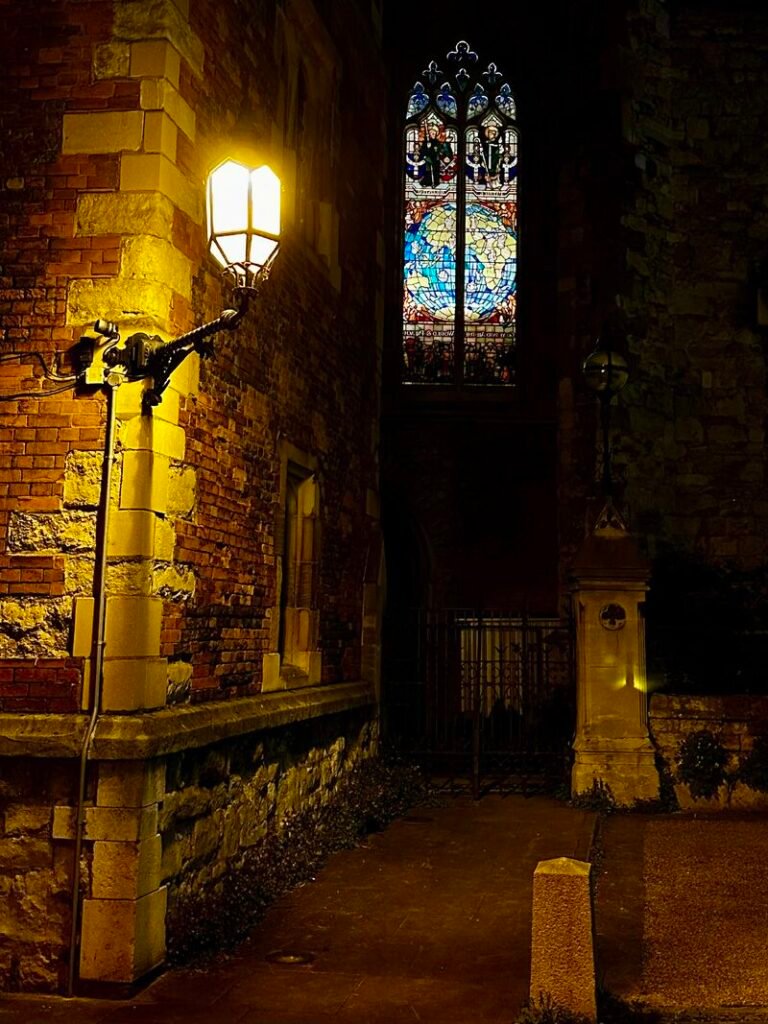
Simon Wrigley found this beautiful window near the entrance to Lambeth Palace.
Rounding the corner, He found it was not one window but two – one with each hemisphere of the globe. It looks like a Nicolosi Globular Projection, which is a Double hemispheric polyconic map projection
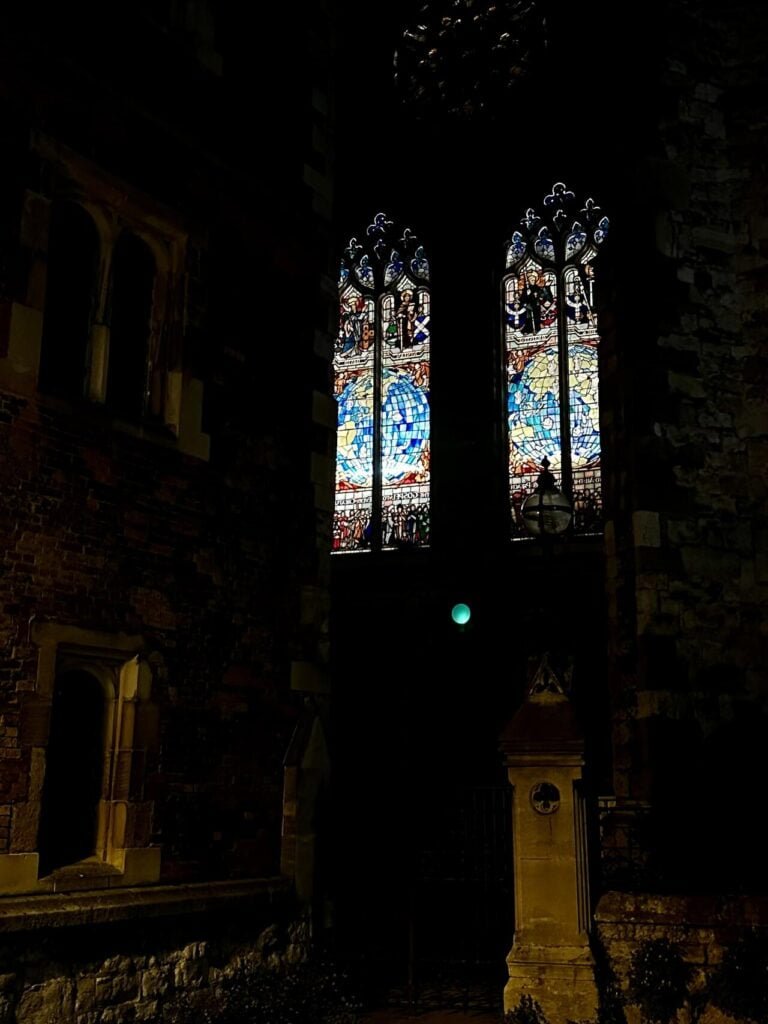
MapsintheWild Lambeth Palace
-
sur Anime Pilgrimage Maps
Publié: 31 August 2024, 4:44pm CEST par Keir Clarke
Apparently many enthusiastic fans of anime like to go on anime pilgrimages, in order to visit the real-world locations that have featured in their favorite shows. Fans of anime, manga, or other animated media often embark on these pilgrimages to connect with the stories they love and to experience the places that inspired their favorite characters and scenes.A number of interactive mapping
-
sur Mappery: It’s a Squishy World
Publié: 31 August 2024, 11:00am CEST
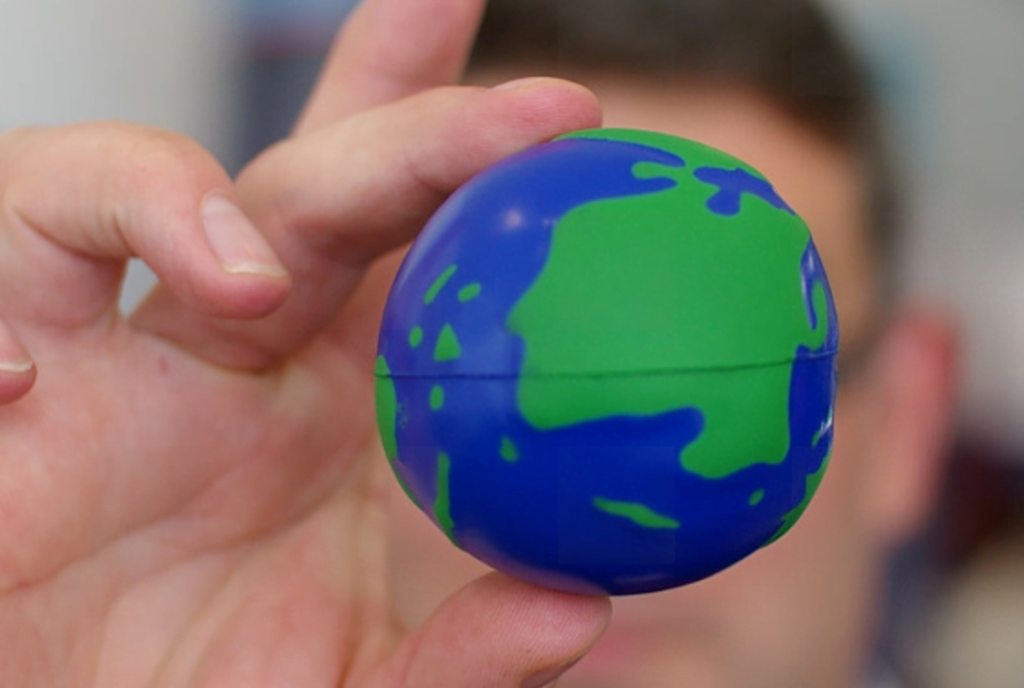
Barry shared this pic of a globe style stress ball, I think it may originate from a proprietary software vendor
MapsintheWild It’s a Squishy World
-
sur Mappery: Collette
Publié: 30 August 2024, 11:00am CEST
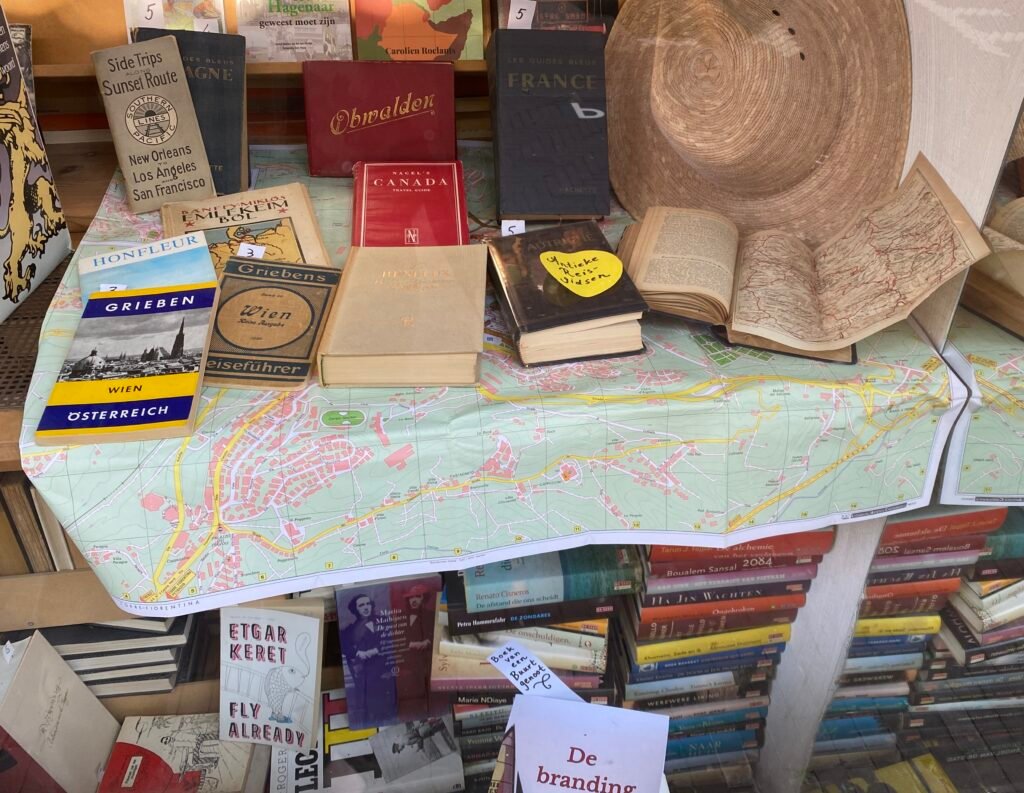
Reinder shared this pic of a shop window display “Cartographically inspired shop window of the 2nd hand bookshop Colette in The Hague”
MapsintheWild Collette
-
sur 245 Russian Military Targets at Risk
Publié: 30 August 2024, 9:54am CEST par Keir Clarke
The Institute for the Study of War (ISW) and Critical Threats have identified hundreds of Russian military sites that are in range of Ukrainian ATACMS. Currently the United States will not allow Ukraine to use US supplied tactical ballistic missiles for long-range deep strikes into Russia. According to the ISW its new map shows "the extent to which US restrictions on Ukraine's use of ATACMS
-
sur Free and Open Source GIS Ramblings: Building spatial analysis assistants using OpenAI’s Assistant API
Publié: 29 August 2024, 8:15pm CEST
Earlier this year, I shared my experience using ChatGPT’s Data Analyst web interface for analyzing spatiotemporal data in the post “ChatGPT Data Analyst vs. Movement Data”. The Data Analyst web interface, while user-friendly, is not equipped to handle all types of spatial data tasks, particularly those involving more complex or large-scale datasets. Additionally, because the code is executed on a remote server, we’re limited to the libraries and tools available in that environment. I’ve often encountered situations where the Data Analyst simply doesn’t have access to the necessary libraries in its Python environment, which can be frustrating if you need specific GIS functionality.
Today, we’ll therefore start to explore alternatives to ChatGPT’s Data Analyst Web Interface, specifically, the OpenAI Assistant API. Later, I plan to dive deeper into even more flexible approaches, like Langchain’s Pandas DataFrame Agents. We’ll explore these options using spatial analysis workflow, such as:
- Loading a zipped shapefile and investigate its content
- Finding the three largest cities in the dataset
- Selecting all cities in a region, e.g. in Scandinavia from the dataset
- Creating static and interactive maps
To try the code below, you’ll need an OpenAI account with a few dollars on it. While gpt-3.5-turbo is quite cheap, using gpt-4o with the Assistant API can get costly fast.
OpenAI Assistant APIThe OpenAI Assistant API allows us to create a custom data analysis environment where we can interact with our spatial datasets programmatically. To write the following code, I used the assistant quickstart and related docs (yes, shockingly, ChatGPT wasn’t very helpful for writing this code).
Like with Data Analyst, we need to upload the zipped shapefile to the server to make it available to the assistant. Then we can proceed to ask it questions and task it to perform analytics and create maps.
from openai import OpenAI client = OpenAI() file = client.files.create( file=open("H:/ne_110m_populated_places_simple.zip", "rb"), purpose='assistants' )Then we can hand the file over to the assistant:
assistant = client.beta.assistants.create( name="GIS Analyst", instructions="You are a personal GIS data analyst. Write and rund code to answer geospatial analysis questions", tools=[{"type": "code_interpreter"}], model="gpt-3.5-turbo", # or "gpt-4o" tool_resources={ "code_interpreter": { "file_ids": [file.id] } } )Then we can start asking questions and giving our assistant tasks:
thread = client.beta.threads.create() message = client.beta.threads.messages.create( thread_id=thread.id, role="user", content="Please load the zipped shapefile and describe the content" )
assistant > The shapefile has been successfully loaded as a GeoDataFrame with the following details: - The GeoDataFrame has 243 entries. - It contains a total of 38 columns with various data types including integer, float, and object types. - One of the columns is a geometry column representing the spatial information. If you have any specific analysis or visualizations you would like to perform on this data, feel free to let me know!The docs have a nice example for how to stream the answers back, e.g. into a Jupyter notebook. I’ve used it to create a small convenience function:
def ask_another_question(question): message = client.beta.threads.messages.create( thread_id=thread.id, role="user", content=question ) with client.beta.threads.runs.stream( thread_id=thread.id, assistant_id=assistant.id, event_handler=EventHandler(), ) as stream: stream.until_done() ask_another_question("Please list the three largest cities")assistant > code_interpreter # Sort the GeoDataFrame by the population in descending order largest_cities = gdf.sort_values(by='pop_max', ascending=False).head(3)[['name', 'pop_max']] largest_cities assistant > The three largest cities in the dataset, along with their maximum population numbers, are as follows: 1. Tokyo: 35,676,000 2. New York: 19,040,000 3. Mexico City: 19,028,000 These cities have the highest recorded maximum population numbers in the dataset. Let me know if you need any further information or analysis!ask_another_question("extract all scandinavian cities ")assistant > To extract all the Scandinavian cities from the dataset, we can filter the GeoDataFrame based on the countries typically considered part of Scandinavia. These countries include Norway, Sweden, Denmark, Finland, and sometimes Iceland. Let's filter the GeoDataFrame to extract the Scandinavian cities. assistant > code_interpreter # List of countries typically considered part of Scandinavia scandinavian_countries = ['Norway', 'Sweden', 'Denmark', 'Finland', 'Iceland'] # Filter the GeoDataFrame for Scandinavian cities scandinavian_cities = gdf[gdf['adm0name'].isin(scandinavian_countries)][['name', 'adm0name']] scandinavian_cities.head() # Displaying the first few Scandinavian cities assistant > Here are some of the Scandinavian cities extracted from the dataset: 1. Reykjavík, Iceland 2. Oslo, Norway 3. Helsinki, Finland 4. København (Copenhagen), Denmark 5. Stockholm, Sweden These are just a few examples of Scandinavian cities present in the dataset. If you would like the complete list or perform any specific analysis on these cities, feel free to let me know!ask_another_question( "please create a world map with all cities (use gray circles) " "with scandinavian cities highlighted as red circles. " )assistant > To create a world map with all cities represented as gray circles and Scandinavian cities highlighted as red circles, we will use the GeoPandas library for mapping. Let's go ahead and create the map. assistant > code_interpreter import matplotlib.pyplot as plt # Plot all cities with gray circles and Scandinavian cities with red circles fig, ax = plt.subplots(figsize=(12, 8)) # Plot all cities in gray circles gdf.plot(ax=ax, color='lightgrey', markersize=5) # Plot Scandinavian cities in red circles scandinavian_cities.plot(ax=ax, color='red', markersize=50, edgecolor='black', label='Scandinavian Cities') # Set the title ax.set_title('World Map with Scandinavian Cities Highlighted', fontsize=16) # Add legend ax.legend() # Display the map plt.show() assistant > It seems that there was an error while plotting the map because the GeoDataFrame `scandinavian_cities` does not have the necessary numeric data to plot the map directly. ... plt.show() output > assistant > Here is the world map with all cities represented as gray circles and Scandinavian cities highlighted as red circles. The map provides a visual representation of the locations of the Scandinavian cities in relation to the rest of the cities around the world. If you need any further assistance or modifications, feel free to let me know!To load and show the image, we can use:
import matplotlib.pyplot as plt import matplotlib.image as mpimg def show_image(): messages = client.beta.threads.messages.list(thread_id=thread.id) for m in messages.data: if m.role == "user": continue if m.content[0].type == 'image_file': m.content[0].image_file.file_id image_data = client.files.content(messages.data[0].content[0].image_file.file_id) image_data_bytes = image_data.read() with open("./out/my-image.png", "wb") as file: file.write(image_data_bytes) image = mpimg.imread("./out/my-image.png") plt.imshow(image) plt.box(False) plt.xticks([]) plt.yticks([]) plt.show() break
Asking for an interactive map in an html file works in a similar fashion.
You can see the whole analysis workflow it in action here:
This way, we can use ChatGPT to perform data analysis from the comfort of our Jupyter notebooks. However, it’s important to note that, like the Data Analyst, the code we execute with the Assistant API runs on a remote server. So, again, we are restricted to the libraries available in that server environment. This is an issue we will address next time, when we look into Langchain.
ConclusionChatGPT’s Data Analyst Web Interface and the OpenAI Assistant API both come with their own advantages and disadvantages.
The results can be quite random. In the Scandinavia example, every run can produce slightly different results. Sometimes the results just use different assumptions such as, e.g. Finland and Iceland being part of Scandinavia or not, other times, they can be outright wrong.
As always, I’m interested to hear your experiences and thoughts. Have you been testing the LLM plugins for QGIS when they originally came out?
-
sur Mappery: Topo Map Chocolate
Publié: 29 August 2024, 11:00am CEST
-
sur The Money Mountains of Los Angeles
Publié: 29 August 2024, 7:52am CEST par Keir Clarke
Nick Underwood has visualized the average median household income in each Los Angeles neighborhood using the analogy of elevation. On his The Topography of Wealth in L.A. map city each neighborhood is displaced 'vertically based on median annual household income'. The map uses census data to show the average household income in each Los Angeles neighborhood as a 3D tower. Sea level on
-
sur EOX' blog: Sentinel-2 Cloudless 2023
Publié: 29 August 2024, 2:00am CEST
We are thrilled to announce the latest release of EOxCloudless 2023 imagery. Whether you are an existing customer or new to EOxCloudless, this latest update offers clarity with beautiful sceneries and is designed to meet the needs of our users in a convenient way. With the everchanging and more cha ... -
sur Oslandia: (Fr) [Story] Oslandia x QWC : épisode 1 / 8
Publié: 28 August 2024, 4:51pm CEST
Sorry, this entry is only available in French.
-
sur Mappery: Deventer
Publié: 28 August 2024, 11:00am CEST
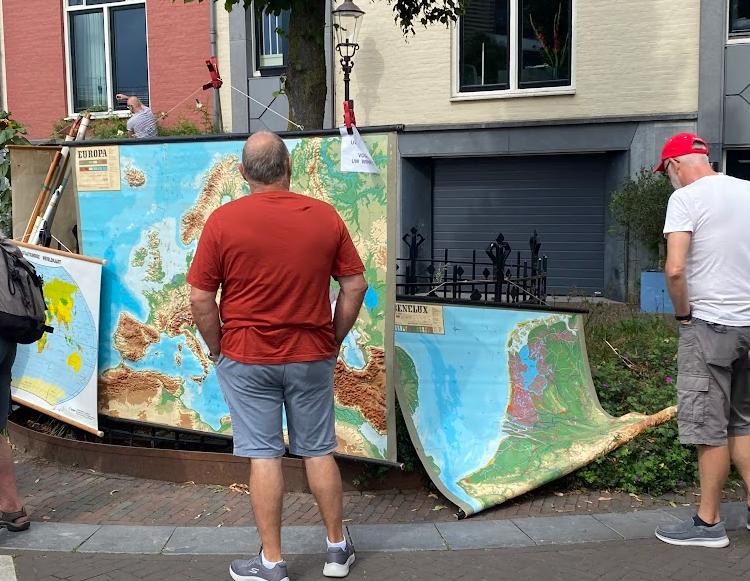
Reinder sent these pics from the second hand book market in Deventer “… at the largest 2nd hand book market of Europe (August 4, 2024) of course there was also some cartographical material for sale.”

MapsintheWild Deventer
-
sur Text Search for Street View
Publié: 28 August 2024, 10:29am CEST par Keir Clarke
all text for nyc (brooklyn) is a very impressive search engine which allows you to search Google Maps Street View imagery for any word. In the words of its developer it is "a unique digital archive of Brooklyn's typography. Users can search and visualize every sign, notice, and street art captured in street images".Enter any word (or combination of words) into 'all text for nyc' and it will -
sur WorldGuessr on Street View
Publié: 27 August 2024, 11:03am CEST par Keir Clarke
My seemingly endless quest to find an alternative to GeoGuessr may be finally over. GeoGuessr is (rightly) by far the most popular Google Maps game on the internet. Unfortunately GeoGuessr's subscription charges mean I can't afford to play it very often. Which means I'm always on the look-out for free alternatives.GeoGuessr is an online geography game that challenges players to identify
-
sur Mappery: Keighley & Worth Valley Railway
Publié: 27 August 2024, 11:00am CEST

Doug shared this old railway map, you might think this an old relic that he spotted but – no! This 150 year old railway line closed in 1962 and was reopened a few years later, you can read more here and you can still travel on the line.
MapsintheWild Keighley & Worth Valley Railway
-
sur GeoTools Team: GeoTools 30.5 released
Publié: 26 August 2024, 11:23am CEST
The GeoTools team is pleased to the release of the latest stable version of GeoTools 30.5:geotools-30.5-bin.zip geotools-30.5-doc.zip geotools-30.5-userguide.zip geotools-30.5-project.zip This release is also available from the OSGeo Maven Repository and is made in conjunction with GeoServer 2.24.5. The release was made by Andrea Aime (Geosolutions) -
sur Mappery: Globe Teapot
Publié: 26 August 2024, 11:00am CEST
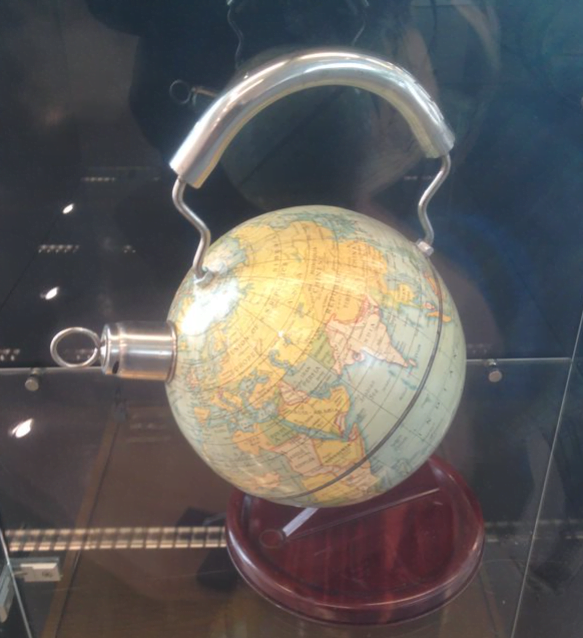
Another one from Reinder Storm. “Don’t remember whether I sent this before, don’t remember where and when I saw this one – but I do know that I like it …”
I am sure the tea will have an international flavour in this pot.
MapsintheWild Globe Teapot
-
sur How Smooth is the Earth?
Publié: 26 August 2024, 10:01am CEST par Keir Clarke
One of the most interesting facts that I learned from the BBC TV series QI was that the Earth is smoother than a billiard ball. Unfortunately, like nearly every other fact I've remembered from that show, it is a load of bull (or should that be balls).Shri Khalpada has created a three.js powered 3D globe of the Earth which allows you to view the Earth's elevation profile to scale (and when
-
sur Mappery: Mount Rainier Time Map
Publié: 25 August 2024, 11:00am CEST
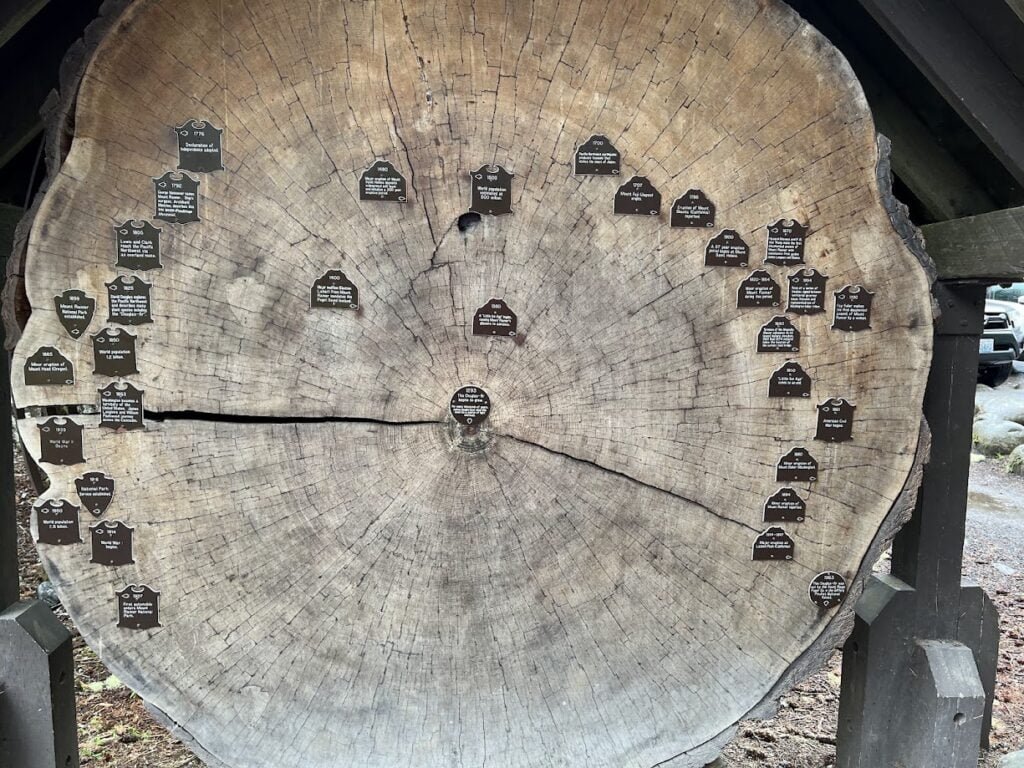
Another pic from Krista Mott’s roadtrip. “At Mount Rainier National Park there was one of the felled Douglas-fir, that began to grow in 1293, depicts a map of time”
I am expecting a bit of “That’s not a map!” feedback but it sure looks like one to me and it definitely is wild.
MapsintheWild Mount Rainier Time Map
-
sur Have You Earned Your Air Pollution Stripes?
Publié: 24 August 2024, 11:13am CEST par Keir Clarke
Ed Hawkins' Climate Stripes visualization of global heating has quickly become a data visualization classic. Climate Stripes (sometimes known as Warming Stripes) are a visual representation of the long-term increase in global temperatures due to climate change. Ed's striking Climate Stripes visualizations consist of colored vertical stripes, with each stripe representing a single year and
-
sur Mappery: Phillipines in Ipswich, Massachusetts
Publié: 24 August 2024, 11:00am CEST
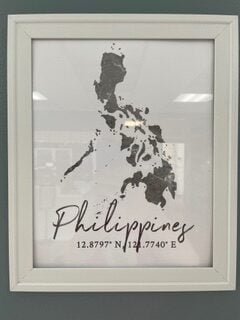
Judy Tymon sent us this pic “I found this map at a new local cafe here in Ipswich Massachusetts. The cafe is called “The M Cafe”, M for Manila, capital of the Philippines. I liked it because it shows the outline of the country along with the lat/long. And of course the cafe is owned by a woman from the Philippines.”
MapsintheWild Phillipines in Ipswich, Massachusetts
-
sur Free and Open Source GIS Ramblings: MovingPandas 0.19 released!
Publié: 23 August 2024, 6:30pm CEST

This release is the first to support GeoPandas 1.0.
Additionally, this release adds multiple new features, including:
- New explore() function adds interactive folium / leaflet maps
- New support for mfjson trajectory

For the full change log, check out the release page.
We have also revamped the documentation at [https:]] using the PyData Sphinx Theme:

On a related note: if you know what I need to change to get all Trajectory functions listed in the TOC on the right, please let me know.
-
sur geomatico: Ética y economia: ¿son viables los proyectos geoespaciales de software libre?
Publié: 23 August 2024, 12:56pm CEST
Pièce jointe: [télécharger]
Jornadas SIG Libre 2024
En la XVII edición de las Jornadas de SIG Libre, debate plenario sobre «viabilidad económica de los proyectos de software libre en datos geoespaciales» en el que participamos con Òscar Fonts, nuestro CTO.
- 0:00 Introducción Gemma Boix, directora del SIGTE – UdG
- 2:30 Angelos Tzotsos (OSGeo)
- 29:20 Óscar Fonts (Geomatico)
- 42:40 Josep Lluís Sala (BGeo)
- 55:30 Iván Sánchez
-
sur Mappery: Light Pollution in the Netherlands
Publié: 23 August 2024, 11:00am CEST
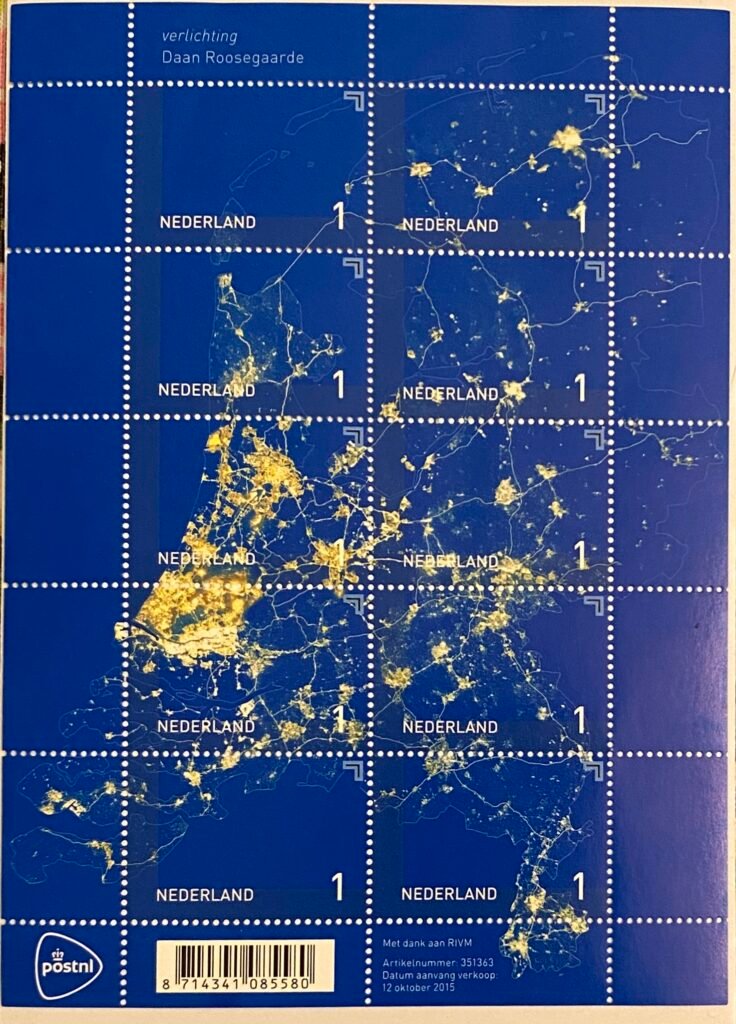
Reinder shared these stamps “These stamps were issued in The Netherlands in 2015. They present an image of light pollution. Artist / designer Daan Roosegaarde has created these illuminated stamps for PostNL. The stamp sheet shows a modern map of the Netherlands on a clear night in spring. The stamps provide insight into the daily use of light.”
We haven’t had that many maps in the wild stamps, surely there must be a load more out there?
MapsintheWild Light Pollution in the Netherlands
-
sur 200 Years of Irish Map
Publié: 23 August 2024, 10:54am CEST par Keir Clarke
The first ever large-scale survey of an entire country was started nearly 200 years ago. From 1825 to 1846 the Irish Ordnance Survey undertook a highly detailed survey of the whole of Ireland in order to create maps primarily at the 6 inch scale.To celebrate 200 years of Irish mapping the University of Limerick and Queen’s University Belfast has created OS200. The OS200 website is a digital
-
sur Mappery: Where do you come from?
Publié: 22 August 2024, 11:00am CEST
Krista Mott sent us this pic from her roadtrip in the north west US. “On the way home, we stopped in Seattle at Pike Place Market where I found this “Show us where you came from!” map. Quite a great representation of visitors from around the world.
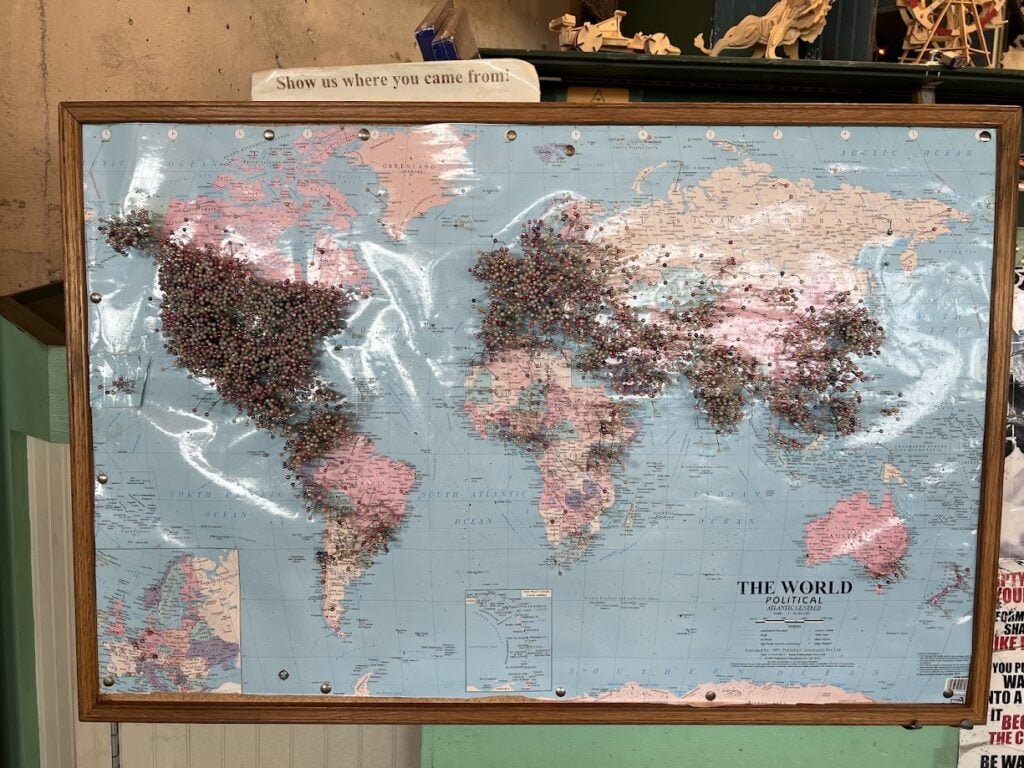
MapsintheWild Where do you come from?
-
sur Population Flags
Publié: 22 August 2024, 9:18am CEST par Keir Clarke
World Population Flags is a Dorling cartogram in which country flags are sized by population. The cartogram is used to visualize where people live around the world and the relative size of each country's population.A Dorling cartogram is a thematic map that is used to visualize quantitative data. On a Dorling cartogram areas are represented by circles rather than their actual geographic
-
sur Mappery: Global Architectural Salvage
Publié: 21 August 2024, 11:00am CEST
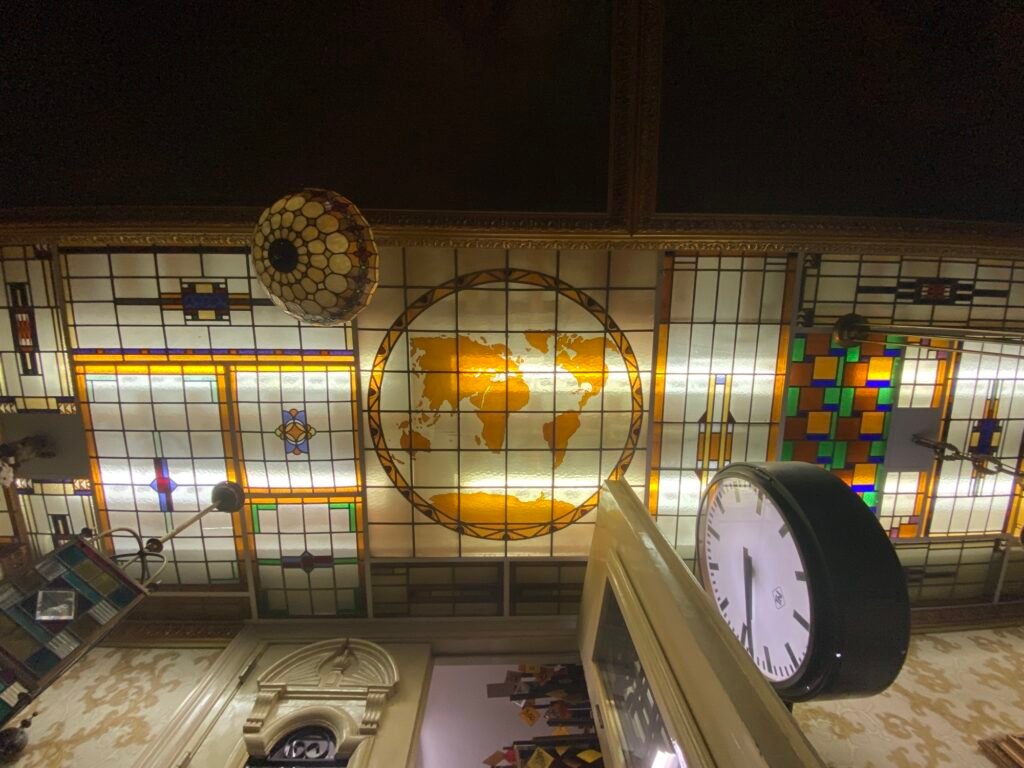
Reinder is on form at the moment with a string of great pics.
“in a shop / workplace where they sell (an awful lot of) antique building materials. I’m not sure whether this is stained glass — or some other technique. I’m sure that I like it!” – we like it too, I think it is painted glass rather than stained
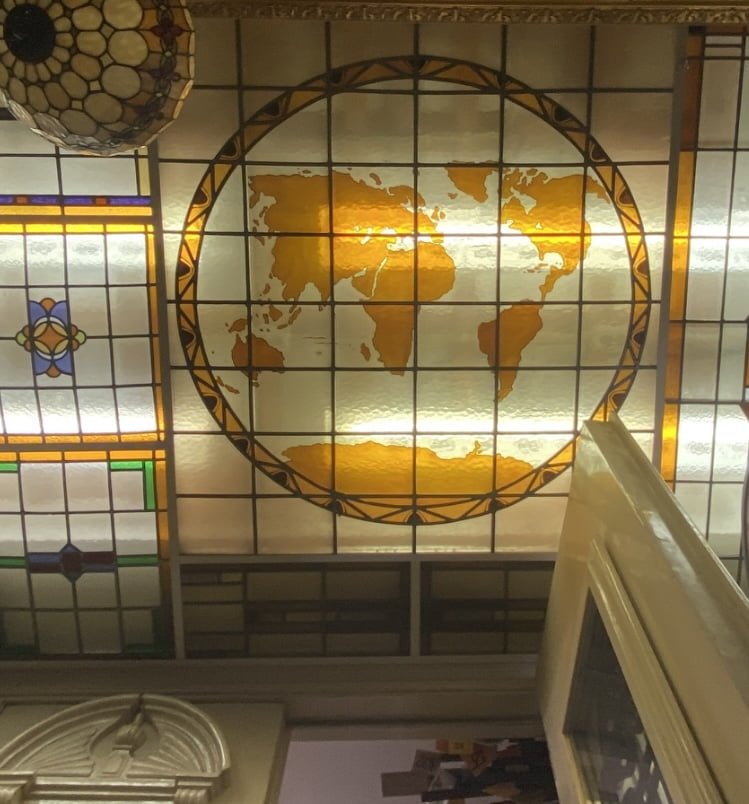 Screenshot
ScreenshotMapsintheWild Global Architectural Salvage
-
sur One Million Screenshots. One Map!
Publié: 21 August 2024, 9:52am CEST par Keir Clarke
Over the years a number of people have used the popular Leaflet.js mapping library to map image datasets. For example Nathan Rooy's Visual Book Recommender uses Leaflet to map the images of 51,847 book covers. The Pudding has also mapped images of 5,000 book covers on its 11 Years of Top-Selling Book Covers, Arranged by Visual Similarity. Mapping libraries have also been used in the
-
sur Mappery: The Places of Hawaii
Publié: 20 August 2024, 11:00am CEST
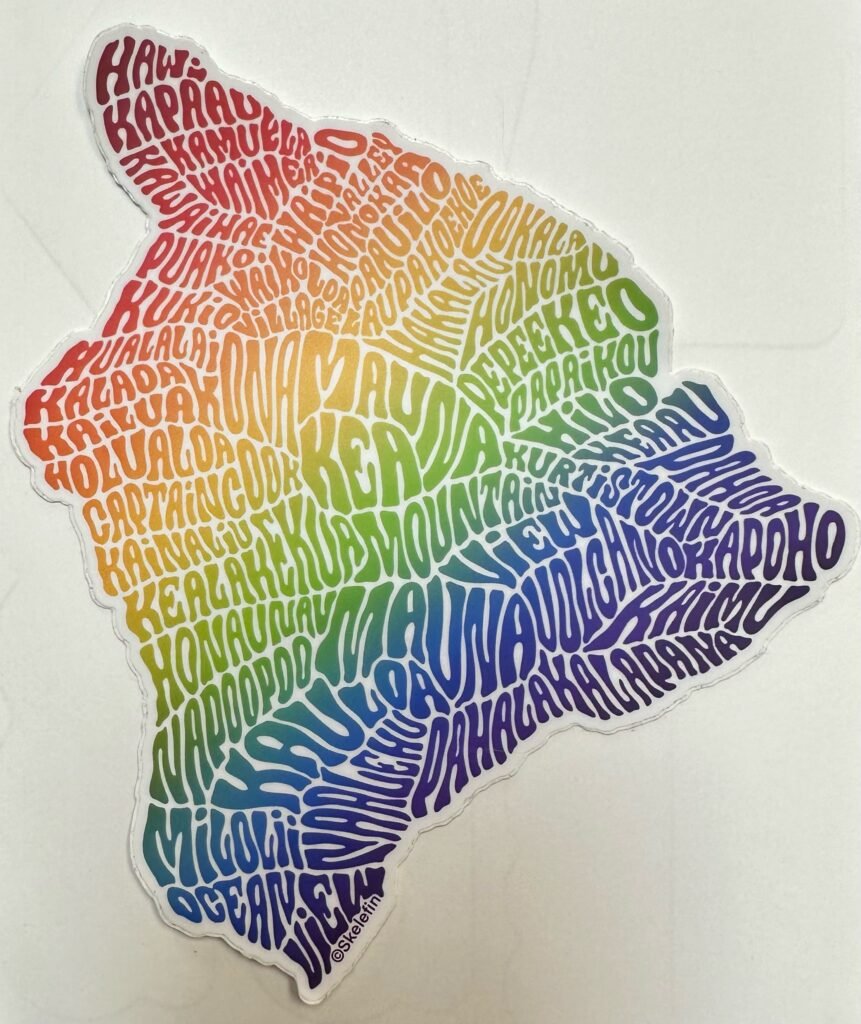
Scott Simmons sent us a pic of this superb sticker from Hawaii, “I found this great sticker on a recent vacation to the island of Hawai’i. The place names are all in their approximate correct location and the artist cleverly chose more important names to prioritize, while still filling the map quite evenly.”
Let’s have some more of these
MapsintheWild The Places of Hawaii
-
sur How to Make Your Own Map Jigsaw Puzzle
Publié: 20 August 2024, 10:03am CEST par Keir Clarke
I've been having a lot of fun over the last few days playing the map puzzles created by the Map Puzzle Factory. However I have been a little frustrated by the Japanese place-names used in the puzzles. I therefore decided to try to create my own map jigsaw puzzle using a map in which the place-names are displayed in English.My Scrambled City game is a simple map of the City of London. Press
-
sur Mappery: The Parade
Publié: 19 August 2024, 11:00am CEST
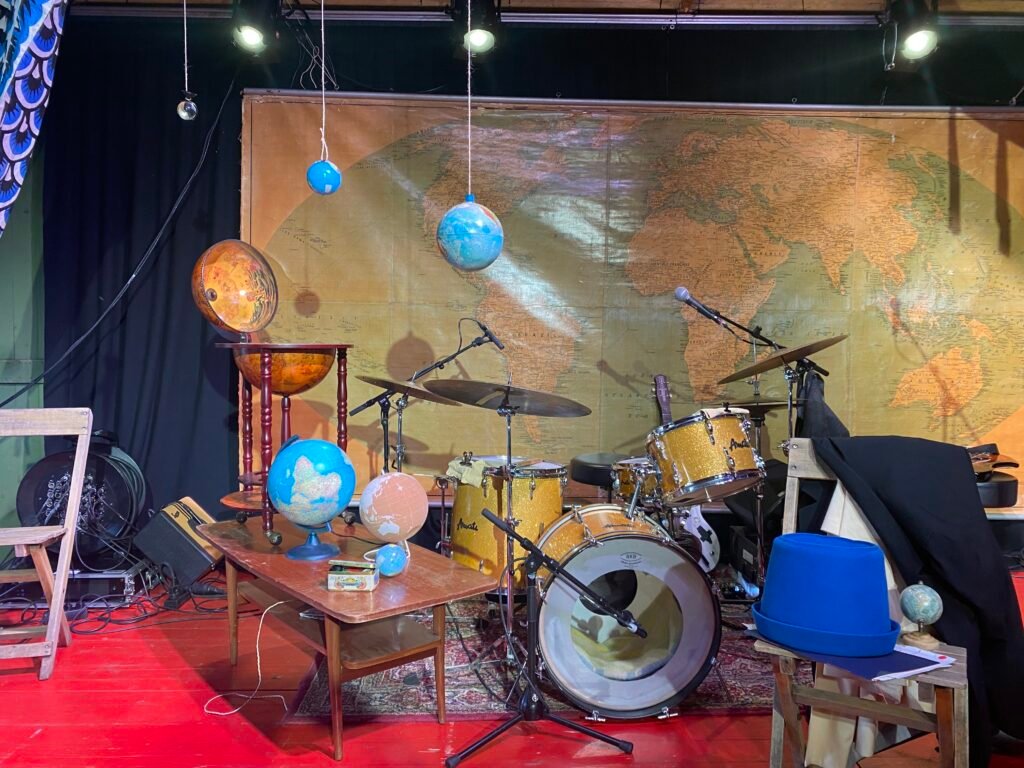
Reinder shared these pics of a gig that he saw recently, the band seem to be very into globes and maps.
“… on the Parade: a travelling theatrical festival in the Netherlands, 18th of July 2024. Cf [https:]] .
“Pop-music meets theater in a light-hearted and quirky concert. Looking at the mysterious word “fundamental”, these men create a bit of chaos in all order. Don’t we see the world fundamentally different than it really is: a dustball in the wind?”
I did quite like it and hope you do as well.”
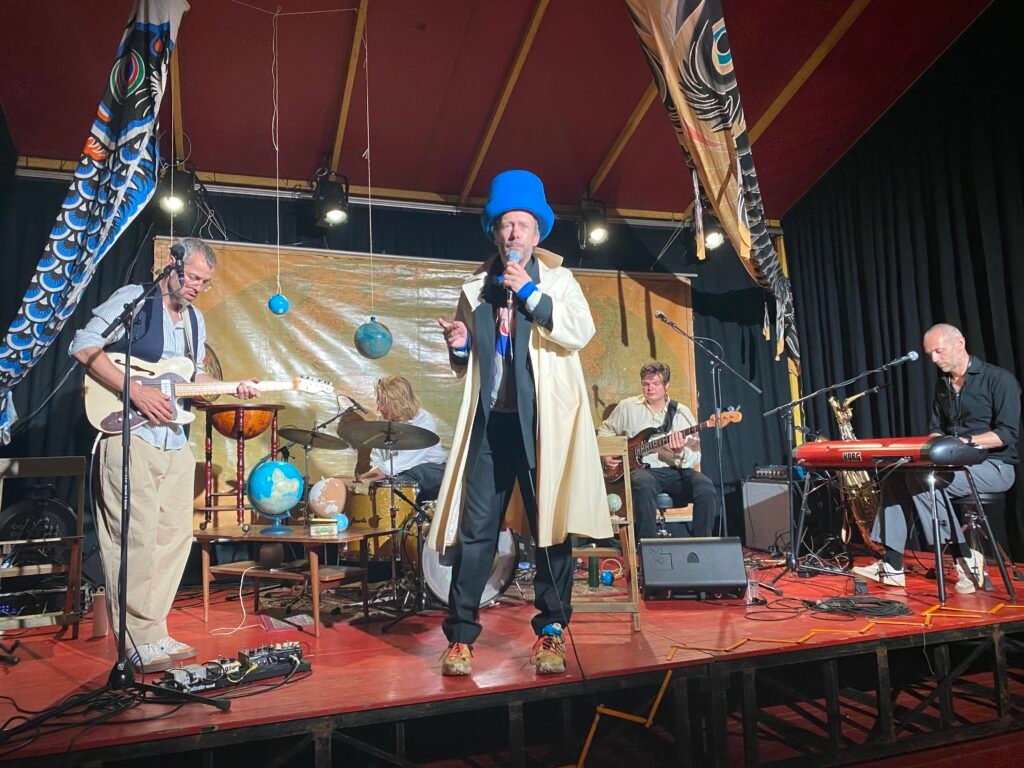
We say what’s not to like (except possibly the music)
MapsintheWild The Parade
-
sur Piecing the World Back Together
Publié: 19 August 2024, 9:55am CEST par Keir Clarke
The world is fractured and divided like never before. Your mission, if you choose to accept it, is to put the Earth back together.The Map Puzzle Factory is a huge collection of map puzzles. Each puzzle is a map of a part of the world which has been divided into a collection of small squares. You simply have to drag the squares into their correct position on the map. In other words - each game
-
sur Mappery: Trollhatte Kanal
Publié: 18 August 2024, 11:00am CEST
Marc-Tobias spotted this van “Seen in [https:]] Includes a scale in kilometers and proper compass!”
That’s the first time I have seen a scale bar on an a map in the wild
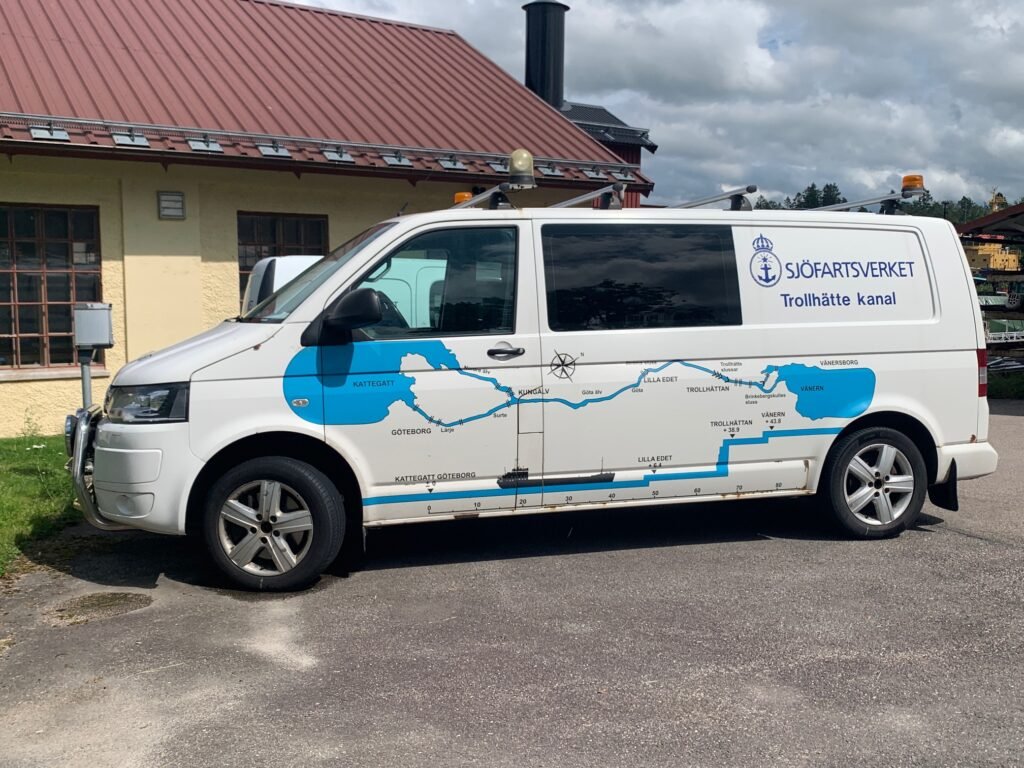
MapsintheWild Trollhatte Kanal
-
sur GeoServer Team: GeoServer 2.24.5 Release
Publié: 18 August 2024, 2:00am CEST
GeoServer 2.24.5 release is now available with downloads (bin, war, windows), along with docs and extensions.
This is a maintenance release of GeoServer providing existing installations with minor updates and bug fixes. GeoServer 2.24.5 is made in conjunction with GeoTools 30.5, and GeoWebCache 1.24.5.
Thanks to Andrea Aime for making this release.
Release notesImprovement:
- GEOS-11336 security-keycloak: upgrade keycloak version
- GEOS-11443 REST API does not take effect immediately due to 10 minute authentication cache
- GEOS-11463 WMS vector dimension validation should query only one feature and only for dimension attribute
- GEOS-11502 Permit resize on user/group/role palette textbox to allow for extra long role names
Bug:
- GEOS-11446 [INSPIRE] Incorrect behavior for unsupported languages
- GEOS-11453 Failure to look-up default value of custom dimensions on vector layers
- GEOS-11462 500 error thrown when double adding a user to a group via REST with JDBC user/group services
- GEOS-11484 DirectRasterRenderer is not respecting advancedProjectionHandling and continuosMapWrapping format_options
- GEOS-11493 Azure blob store may not get environment parameters from property file
Task:
- GEOS-11464 Update Jackson 2 libs from 2.17.1 to 2.17.2
For the complete list see 2.24.5 release notes.
Community UpdatesCommunity module development:
- GEOS-11111 Open search for EO community module: STAC search page has wrong self link
Community modules are shared as source code to encourage collaboration. If a topic being explored is of interest to you, please contact the module developer to offer assistance.
About GeoServer 2.24 SeriesAdditional information on GeoServer 2.24 series:
- GeoServer 2.24 User Manual
- Control remote HTTP requests sent by GeoTools/GeoServer
- State of GeoServer 2.24.1 (foss4g-asia presentation)
- Multiple CRS authority support, planetary CRS
- Extensive GeoServer Printing improvements
- Upgraded security policy
Release notes: ( 2.24.5 | 2.24.4 | 2.24.3 | 2.24.2 | 2.24.1 | 2.24.0 | 2.24-RC )
-
sur Mappery: Matthijs Röling
Publié: 17 August 2024, 11:00am CEST
Reinder shared this pic of a book cover “Suddenly it occurred to me that the cover of this book by the Dutch writer Jean Pierre Rawie is decorated with a painting by Matthijs Röling, and that he added a globe to this still life.”
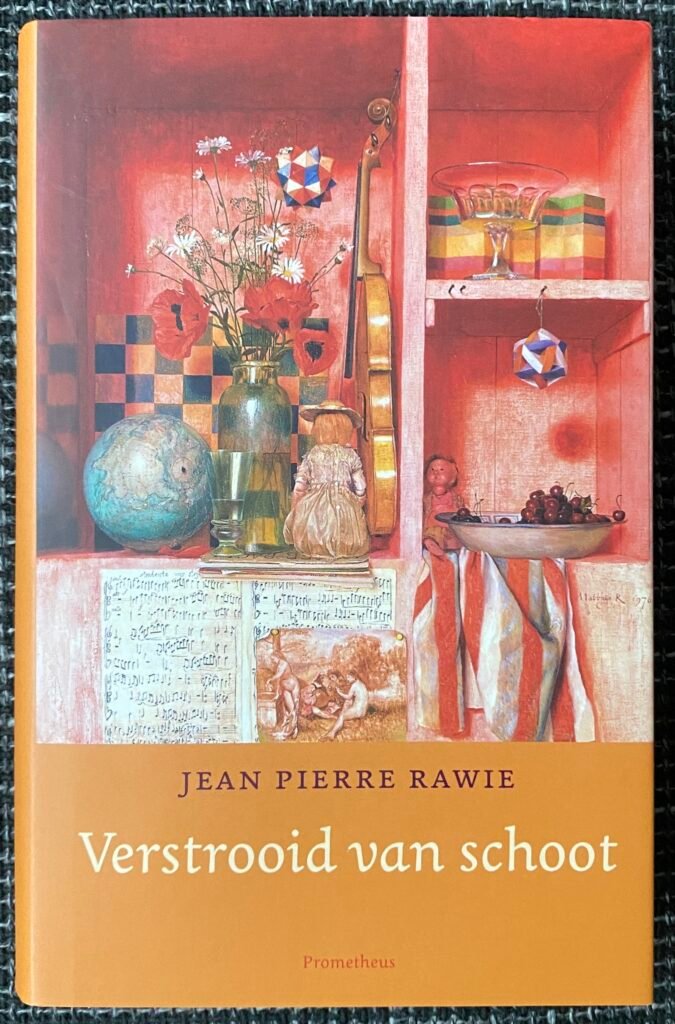
MapsintheWild Matthijs Röling
-
sur Turning Gaza to Rubble
Publié: 17 August 2024, 9:03am CEST par Keir Clarke
This week the Gaza health ministry reported that 40,000 Palestinians have been killed in Gaza since Israel started attacking the territory in October. Over a third of those killed have been children. Much of Gaza itself has also been turned to rubble.According to Bloomberg Israeli air strikes on Gaza have created 42 million tonnes of debris in the Strip. That is "enough rubble to fill a line of
-
sur XYCarto: Cartographic Aotearoa
Publié: 17 August 2024, 3:38am CEST
I try hard to keep this blog about basic open source processing in GIS. I don’t spend much time talking about my cartographic work, since I like put it up in the gallery and try to let it speak for itself. Further, 90% of my cartographic products involve processing data before it ever gets to visualization, therefore, I see more value in demonstrating the basic processing and hopefully inspire folks to do their own thing once their data is in place.
If you might indulge me; however, I’d love to toot my own horn as they say and do a write up on my acceptance to the Atlas of Design this year and the honor to do a brief interview with Radio New Zealand (RNZ) about the map.
I know it is a bit cheeky to put up recognition of one’s own work, but this map was the culmination of several years of iterations, heaps of footwork getting it known, and a number of rejections along the way. I’m just so excited to finally get it out there to a wider audience.
Since this is primarily an open source blog about GIS, and that several have asked me about my tech stack I’ll share a portion of it here. If you want to get a feel of some of my blending techniques, you can see some past blogs where I wrote this up.
As I mentioned above, that vast majority of my cartography is in data prep and making data easier to work in visualization projects. I have a fairly simple tech stack for data prep.
- QGIS – Base map layout. My method is most often to develop the base image here, but do all the post processing for legends, supporting text, graphics, etc in specialized layout software. QGIS is amazing at handling large file types, blending, and making repeatable color palettes. Doing work at a national and world scale is often without issue.
- GDAL – Most used in the stack for prepping large scale raster data. Used more than anything else in GDAL for my vis work is gdalwarp, gdal_translate, gdaladdo, gdalbuildvrt, and gdaldem [hillshade, slope]. These are often used in bash scripts to repeat processes allowing me to easily develop multiple resolutions, scales, and resamples.
- GeoPandas – Used for vectors and primarily for my cleaning to get lighter GPKG files, automating redundant processes like clips, simplification, and table manipulation. It is an amazing tool I use a lot in development too.
- Python/Bash – Used for controlling all the automation and processing. Depending on the complexity of the task at hand, I will bounce between the two. Bash is really great at multi-core processing and can save enormous amounts of time in redundant processes.
- Colorhexa /Gpick – Palette development. Gpick is incredibly helpful in sampling imagery to find a color value you like. You can bring these values into Colorhexa and start to develop gradients and divergent values all the while keeping within your tone. There are many other sites that will help you do this, I just happen to enjoy this one.
- Docker – An unlikely item in a cartographic stack, but Docker has proved invaluable to me by allowing me to run multiple versions of QGIS and GDAL without wrecking my machine. I have a basic QGIS/Docker example here.
For those out there who have supported me on this journey and even those who lurk in the shadows, I cannot thank you enough for reading, liking, and sending me messages letting me know you are out there and find some of this useful. It helps more than you know and motivates me to continue to move forward. Also, tell all your friends!
-
sur QGIS Blog: Reports from the winning grant proposals 2023
Publié: 16 August 2024, 4:18pm CEST
With the QGIS Grant Programme 2023, we were able to support six proposals (four in the first round and two in the second round) that are aimed to improve the QGIS project, including software, infrastructure, and documentation. The following reports summarize the work performed in the first four proposals:
- QGIS Bug Tracker cleanup (#266) – Report
We have identified and closed ~291 tickets, among them:- 162 bugreports and feature requests which were already fixed or implemented
- 29 bugreports and feature requests which are invalid (data issues, wrong use of functionality, etc)
- 57 duplicate bugreports and feature requests
- 5 won’t fix bugreports
- 5 bugreports were converted to feature requests
- 33 tickets were closed (does not contain steps to reproduce, test data and no feedback was provided within several month)
- Additionally we ensured that all tickets has correct tags assigned to to make them easier to find.
- Porting to C++ and harmonization of Processing algorithms (#271) – Report
The QGIS Porting to C++ and Harmonisation of Processing Algorithms grant is now complete.- Existing Processing algorithms Voronoi Polygons and Delaunay Triangulation have been ported to C++ and now use GEOS instead of the unmaintained Python module.
- Two algorithms for generating XYZ tiles (directory and MBTiles variants) have been ported to C++ using a safer and cleaner multi-threading approach.
- The Align Rasters tool, which was not exposed to Processing, has been removed and a new Processing algorithm with the same functionality has been added.
- The existing Raster Calculator algorithm has been ported to C++. The algorithm now has two variants: a toolbox version that works the same way as before, and a modeler version that uses the same approach to input naming as the GDAL raster calculator.
- Add vertical CRS handling to QGIS (#267) – Report
- As of QGIS 3.34, QGIS can now create and handle vertical and compound CRSes.
- In QGIS 3.34 coordinate transforms were reworked so that they function correctly with vertical transformation, if both the source and destination CRS have vertical components.
- In QGIS 3.36 the coordinate reference selection widgets were updated to offer choices of 2d only, compound, or vertical only CRSes.
- In version 3.38, we introduced a new setting for QGIS projects, for their vertical reference system. Users can control this through project properties, and it’s accessible via PyQGIS and via associated expression variables (eg @project_vertical_crs) for use in print layouts.
- Similarly, in 3.38 we introduced the API support for map layers to have a vertical CRS. (This was not exposed to users in 3.38 though)
- In QGIS 3.40 so far we have exposed the vertical CRS setting for vector layers to users (via the layer properties dialog), allowing users to specify the associated vertical CRS for these layers. The vertical CRS is respected in elevation profile plots, in Identify tool results, and in 3D Map views (assuming the 3D map is created with an associated vertical CRS).
- There is an open pull-request for 3.40 to expose the vertical CRS for point cloud layers in a similar way, with the vertical CRS being respected in elevation profiles, identify tool results, and 3D map views
- We have open pull requests for 3.40 to show layer vertical CRS information in the layer properties “information” pages, and add expression variables at the layer scope (eg @layer_vertical_crs).
- Improve test result handling on QGIS CI (#268) – Report
Any tests which fail a rendering comparison will write a descriptive comment to the PR. The comment details which render tests failed, where they are in the code, and includes some helpful pointers to downloading the full test report and the QGIS developer documentation. We also implemented lots of improvements in running the tests locally and how the render test reports are generated and presented to developers.
Thank you to everyone who participated and made this round of grants a great success and thank you to all our sustaining members and donors who make this initiative possible!
- QGIS Bug Tracker cleanup (#266) – Report
-
sur Mappery: yNot Festival
Publié: 16 August 2024, 11:00am CEST
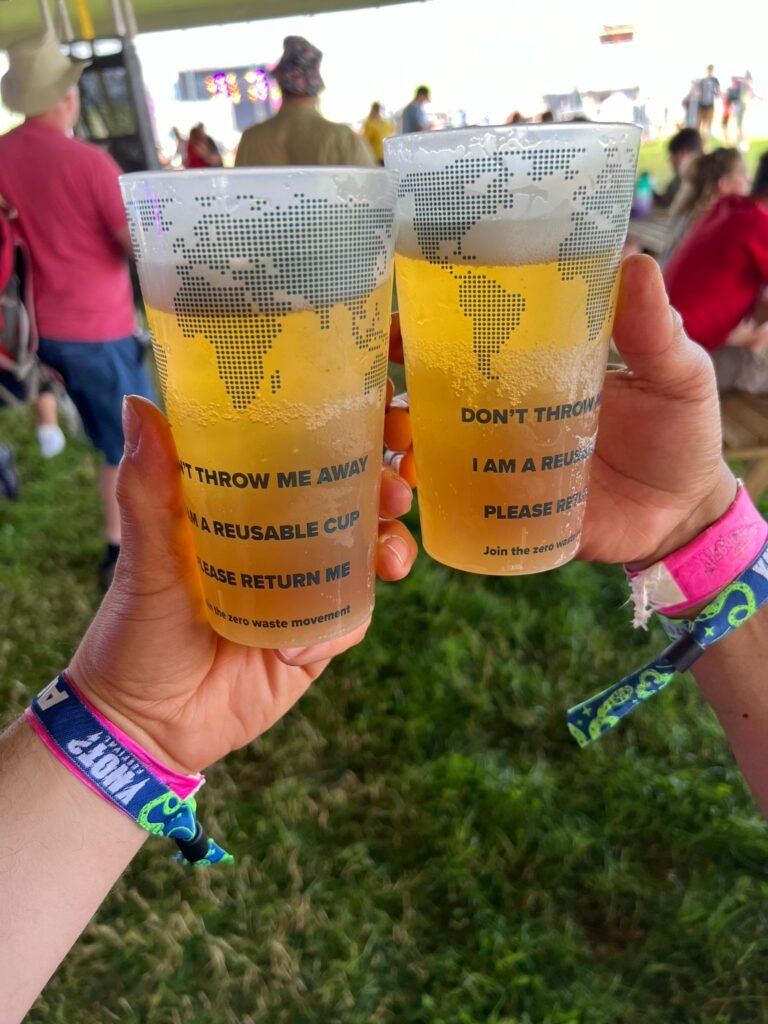
Jeremy shared a pic of the recyclable beer glasses at the yNOT festival. Is that a semi-conical projection?
MapsintheWild yNot Festival
-
sur Markus Neteler: GRASS GIS 8.4.0 released
Publié: 16 August 2024, 10:20am CEST
The GRASS GIS 8.4.0 release provides more than 520 improvements and fixes with respect to the release 8.3.2.
The post GRASS GIS 8.4.0 released appeared first on Markus Neteler Consulting.
-
sur How the World Powers Itself
Publié: 16 August 2024, 9:33am CEST par Keir Clarke
You can learn a lot about how the world powers itself from the Global Energy Monitor's Power Tracker. This interactive map shows the locations of nearly 18,000 power stations in 200 countries around the world, categorized by power sector.Using the map's filter controls it is possible to explore where different types of power stations are distributed around the world. This allows you, for
-
sur Mappery: Zierikzee
Publié: 15 August 2024, 11:00am CEST
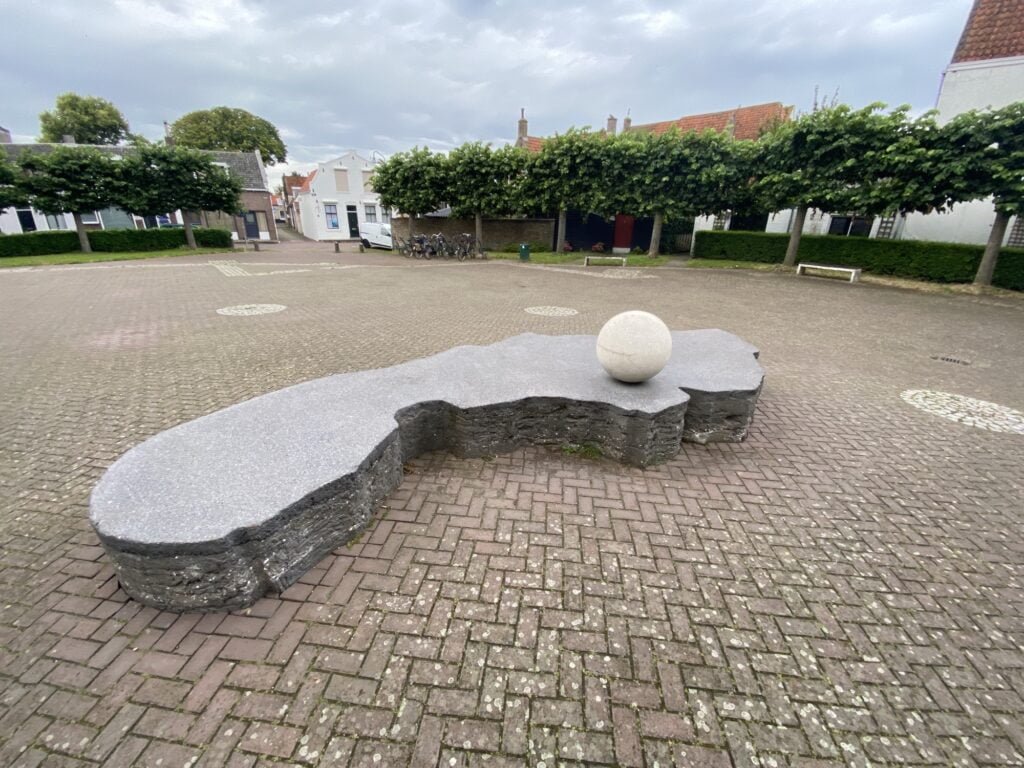
Reinder sent us this interesting map sculpture “I spotted this specimen of street furniture — in fact: my wife did. What you see is the outline of the island Schouwen-Duiveland, part of the Dutch province Zeeland. The white ball is actually on the spot of the town Zierikzee. Very quiet and charming now, but it has quite a notorious history. “
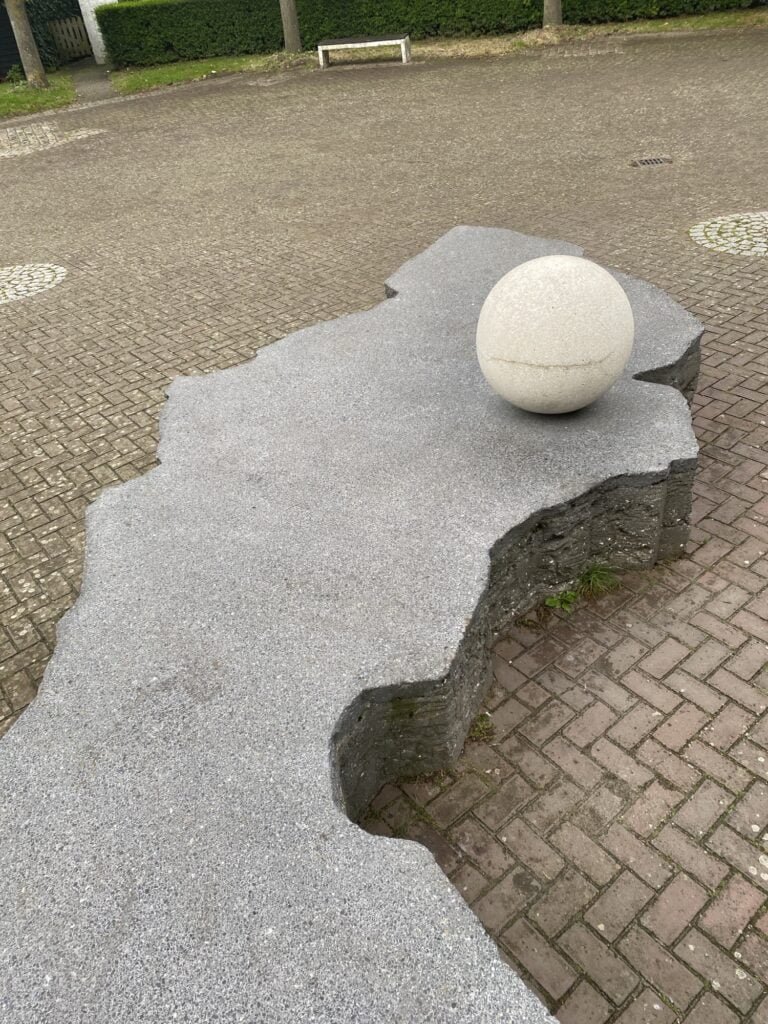
Well done Mrs Storm!
MapsintheWild Zierikzee
-
sur Virtual Indian Independence Day
Publié: 15 August 2024, 10:45am CEST par Keir Clarke
Today is Indian Independence Day. On this day India celebrates its independence from the United Kingdom. On 15 August 1947 Jawaharlal Nehru, the first Prime Minister of India, raised the Indian flag above the Lahori Gate of the Red Fort in Delhi. Since then every year on Independence Day the incumbent Prime Minister repeats the ceremony by raising the flag over the Red Fort and by addressing
-
sur Jackie Ng: Announcing: MapGuide Open Source 4.0 Beta 2
Publié: 14 August 2024, 9:40pm CEST
This took way longer than expected, but the 2nd beta release of MapGuide Open Source is now available.
The main driver for this release is to update our various web tier components to their latest respective versions:
- PHP 8.1.29
- Apache [httpd] 2.4.62
- Apache Tomcat 9.0.89
- Installer
- Newer libpq.dll (PostgreSQL 16.3) bundled with Windows installer
- Server Tier
- Fix instability on Linux due to criss-crossed resolution of sqlite3 and geos symbols to our shared libraries instead of the distro-provided versions
- Repository admin tools have been momentarily pulled from this and future beta releases until the admin scripts have been updated and/or rewritten. As a workaround, use MapGuide Package files to backup/restore repository content
- Removed immature MVT tile rendering support. If you want to produce Mapbox Vector Tiles, use any tool from this list
- Web Tier
- Fix QUERYMAPFEATURES SelectionKey containing a newline char, breaking client-side reconciliation of selected features
- More PHP8 compatibility fixes in PHP AJAX Viewer
- Fix bad instanceof exception checks in PHP AJAX Viewer
- More PHP8 compatibility fixes in Site Administrator
- Buffer overflow fixes in WMS/WFS service layer
- New optional --bind-to parameter for MgDe [HttpServer]
- InstantSetup
- Fix crash if no setup log path specified when configuring
- Samples
- Fix bad extents in SheboyganXYZ tileset
Download
Note: Trac is a bit flaky right now, so the release notes page may not display. If that happens just retry with browser refreshes. Failing that, you can find all the necessary download links in my release announcement email -
sur WhereGroup: Plugins entwickeln für PhpStorm am Beispiel von Mapbender
Publié: 14 August 2024, 3:40pm CEST
Integrierte Entwicklungsumgebungen (IDEs) bringen von Haus aus schon viel Funktionalität mit. Fehlt allerdings noch eine Funktionalität, lässt sich diese oft auch über ein selbst entwickeltes Plugin ergänzen. -
sur Mappery: Canada Dry
Publié: 14 August 2024, 11:00am CEST

Kate shared this “Neat (and mappy!) Final Jeopardy trivia from the other night: “Early 1900s labels for this beverage brand featured a beaver sitting on a log at the top of a map.”
I am wondering whether the “Dry” refers to the taste or Prohibiton
MapsintheWild Canada Dry
-
sur Mapping Train Connections
Publié: 14 August 2024, 9:34am CEST par Keir Clarke
For ecological reasons I haven't taken a flight in over 30 years. Consequently I have probably spent many, many hours traveling across Europe by train. One of my retirement plans is to spend winters in Southern Italy. I have begun therefore to research how best to travel by train to southern Italy.According to TrainConnections the best plan is probably to break the journey into two - to take one
-
sur Mappery: Maps in a Bar
Publié: 13 August 2024, 11:00am CEST

When Erik was in Dubrovnik for a conference he ended up in this bar with colleagues. “With the #CLGE delegates you always end up at a #MapsintheWild bar…”
MapsintheWild Maps in a Bar
-
sur Russia's Secret Nuclear Targets in China
Publié: 13 August 2024, 9:39am CEST par Keir Clarke
The Financial Times has obtained secret Russian military files which detail how Russian forces train to use tactical nuclear weapons against both NATO and China.A story-map in the article Russian navy trained to target sites inside Europe with nuclear-capable missiles (paywalled) shows a number of target locations in Europe and the Pacific for Russian conventional and nuclear missiles. In the
-
sur Mappery: The Neighbourhoods of Ghent, piece by piece
Publié: 12 August 2024, 11:00am CEST
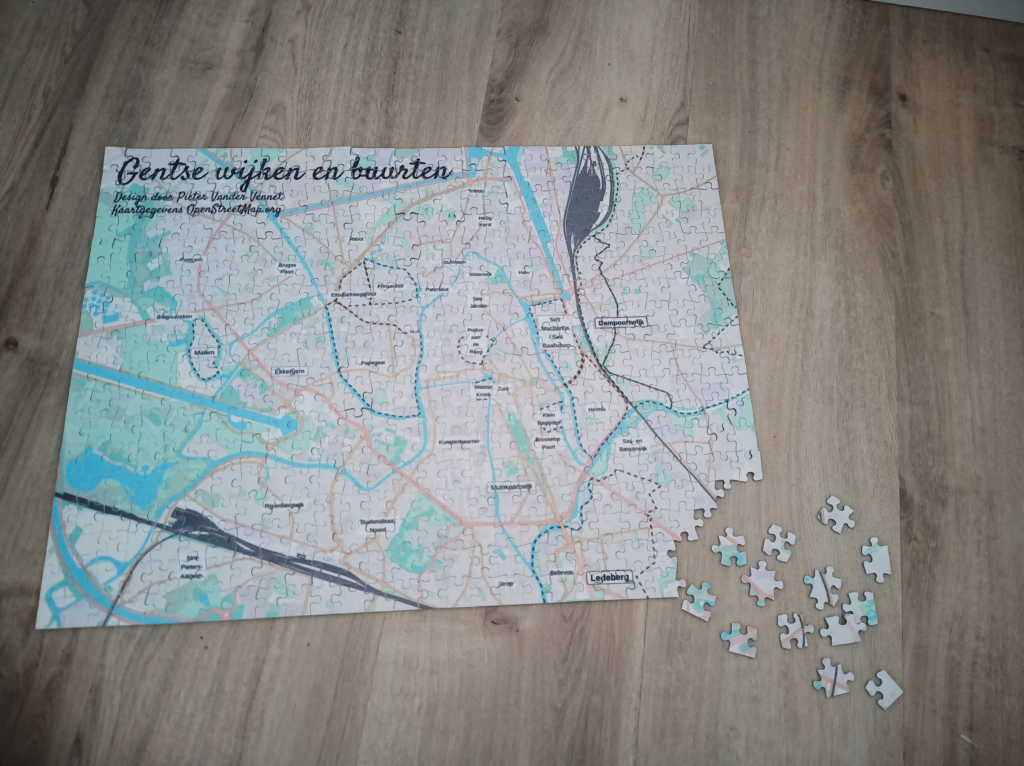
Pieter is a true map geek.
“I wanted to learn the names of the neighbourhoods in #Ghent, so I made me a #puzzle. I added the neighbourhoods in #OpenStreetMap , then made a custom theme in #MapComplete and use the ‘export as PNG’-functuon. The background is a modified stylesheet for @protomaps“
I did say true map geek!!
MapsintheWild The Neighbourhoods of Ghent, piece by piece
-
sur Real-Time Radiation Maps
Publié: 12 August 2024, 9:38am CEST par Keir Clarke
Yesterday a fire broke out at the Zaporizhzhia nuclear power plant in Russian occupied southern Ukraine. On hearing the news of the fire I almost immediately rushed to the Real-Time Radiation World Map in search of any detected spikes in radiation in the area.The Real-Time Radiation World Map visualizes radioactivity levels from Geiger counters around the world. Luckily, as you can see from the
-
sur Sean Gillies: Bear scratch
Publié: 12 August 2024, 2:28am CEST
I just emailed the Bear 100 race director, Cody Draper, and said that I'm injured and won't recover in time to start in 6 weeks. I'm also too injured to do Black Squirrel in 3 weeks and will be emailing Nick and Brad next.
What's the injury? When I came home from vacation and started to ramp up my running, my right Achilles tendon became sore and very inflamed. On July 17 I went out for a 30 mile run and had to bail at mile 20. I took some time off from trail running and have been chugging on an elliptical trainer at my gym. Yesterday I tried some running on the bike path behind my house and couldn't even go a mile without excruciating pain. I'm calling it, my season is over. The last time I had serious Achilles tendonitis like this was at the end of my ultimate frisbee career 20 years ago. It took 4 months before I could run without pain. I'm going to keep going to the gym, ice and rest, see some specialists, and get ready for 2025.
-
sur Mappery: Serbo-Montenegrin Attack on Dubrovnik
Publié: 11 August 2024, 11:00am CEST
-
sur QGIS Blog: Plugin Update – July, 2024
Publié: 10 August 2024, 12:05pm CEST
For the last month of July, one short of 30 new plugins were published in the QGIS plugin repository.
Here follows the quick overview in reverse chronological order. If any of the names or short descriptions catches your attention, you can find the direct link to the plugin page in the table below:
MariaDB to QGIS Fetches longitude (x) and latitude (y) data from MariaDB and writes it to a Shapefile or GeoPackage and adds it to your map. Print Selection Outputs selected features to text console. DeraPro DeraPro for projects and studies allows the download of the reference spatial data of Andalusia and make a cut of the information for a specific study area. QPackageQGZ QPackage is a tool to save both your QGIS project and data contained in the project to a new directory. ArgentinaGeoServices A QGIS plugin to import WMS Geoservices from Argentina. T Vertical Sessions Used to Vertical Sessions of Lidar Point Cloud. BuenosAires Converter A QGIS plugin that converts layers to EPSG:9497. Make Sector Plugin to create sector, circle radius, and spidergraph delimited and vector layer. CBERS-4A WPM Explorer The CBERS Explorer is a specialized plugin developed to facilitate the search and retrieval of images from the China-Brazil Earth Resources Satellite (CBERS) program, specifically focusing on the CBERS-4A satellite with Wide Field Imager (WPM) data. FPT Plot Alocation Plot alocation for forest inventory. QGISpell Creates context menu spell checking for attribute data based on ENCHANT libraries. ur-scape Data Importer Import data to ur-scape. MorphAL MorphAL plugin for QGIS. LER+ Nem adgang til LER2 forespørgsler. Threshold to ROI Create ROI (Region of Interest) with threshold values. Spell Checker Check the spelling of words in Print Layout elements. Filter By Selection Filter a given layer by the selected feature and attribute of another layer. Natur i Norge kartlegging Natur i Norge (NiN) mapping tool. AIAMAS – AI-Assisted Map Styler Symbolize your vector layers in seconds. Sentinel 2 Image Downloader This plugin allows users to download Sentinel-2 images. MapSafe Safeguard datasets using masking, encryption and notarisation. GPX Maker for GARMIN® devices This plugin exports GPX files for GARMIN® devices. QGIS Sound Effects Add sound effects to QGIS to make work less boring. Mosaic Tool A plugin to mosaic bands from selected raster layers. Polaris QGIS interface for Polaris through Polaris-Studio ArcGeek Calculator A comprehensive toolset for coordinate calculations, conversions, spatial operations, watershed analysis, land use analysis, and flood simulation in QGIS. Auxiliary Labeldata Importer Helps you to import Labeldata, stored in an auxiliary Layer from another Project. Sections Creates a section polygon layer from a point layer. Slownik warstw Tworzy s?ownik w formie pliku txt rozdzielanego tabulacjami dla wybranych warstw, program pozwala na eksport pe?nych nazw pól danej warstwy oraz wersje jako powstanie po zmienie z gpkg do shp. -
sur Mappery: Asia?
Publié: 10 August 2024, 11:00am CEST
-
sur Memorial Day Weekend Helicopter Flights
Publié: 10 August 2024, 8:40am CEST par Keir Clarke
The Gothamist has mapped out helicopter flights over New York City during the Memorial Day Weekend. The map accompanies a story on the rise in residents' complaints about helicopter noise in the city and the news that the City Council is introducing two bills aimed at reducing helicopter traffic.The interactive map in NYC Council bills aim to soar above helicopter noise complaints uses data
-
sur Fernando Quadro: Curso de GeoNode: Inscrições abertas
Publié: 9 August 2024, 6:43pm CEST
Aprenda a criar a sua própria Infraestrutura de Dados Espaciais com o GeoNode, uma plataforma para gestão e publicação de dados geoespaciais que reúne projetos open source maduros e estáveis sob uma interface consistente e fácil de usar, permitindo que os usuários, compartilhem seus dados de forma rápida e fácil.
Este curso visa capacitar os profissionais no uso eficiente da plataforma GeoNode, e tem como objetivos:
 Familiarizar os participantes com os conceitos fundamentais do Geonode e suas capacidades.
Familiarizar os participantes com os conceitos fundamentais do Geonode e suas capacidades.
 Explorar o funcionamento de servidores de mapas e seus benefícios.
Explorar o funcionamento de servidores de mapas e seus benefícios.
 Apresenar como realizar a criação de usuários e grupos de acessos às suas informações.
Apresenar como realizar a criação de usuários e grupos de acessos às suas informações.
 Ensinar como realiza a criação de seus Mapas, Dashboards e GeoStories.
Ensinar como realiza a criação de seus Mapas, Dashboards e GeoStories.
 Realizar a integração do Geonode com o QGIS através de plugins.
Realizar a integração do Geonode com o QGIS através de plugins. Quer saber mais?
Quer saber mais?O Curso é oferecido na modalidade EAD Ao Vivo, com uma carga horária de 18 horas divididos em 6 encontros. Porém, essas aulas são gravadas e ficam disponíveis ao aluno por 12 meses em nosso portal do aluno.
Então, se por acaso você não puder comparecer em alguma das aulas ao vivo, não se preocupe, você poderá rever a aula gravada a qualquer momento.
 Ficou interessado?
Ficou interessado? -
sur KAN T&IT Blog: Innovación y Colaboración en FOSS4G Europe 2024
Publié: 9 August 2024, 4:39pm CEST
¿Te apasionan las tecnologías geoespaciales de código abierto? Si es así, FOSS4G Europe 2024 en Tartu, Estonia, fue el evento que no debiste perderte.
¿Alguna vez te has preguntado cómo el software de código abierto está revolucionando el mundo de los Sistemas de Información Geográfica (SIG)? FOSS4G Europe 2024 reunió a expertos y entusiastas de todo el mundo para explorar esta pregunta y mucho más.
Durante siete días, del 1 al 7 de julio, Tartu se convirtió en el epicentro de la innovación geoespacial. En esta ocasión, nuestro CEO, Ariel Anthieni y nuestro Sales Engineer, Adrián Yoris, tuvieron la oportunidad de participar de este evento.La conferencia ofreció una serie de talleres interactivos, presentaciones de vanguardia y sesiones plenarias con ponentes de renombre. Uno de los momentos destacados fue la presentación sobre la implementación de SIG de código abierto en proyectos comunitarios, donde se discutió cómo estas herramientas están transformando la gestión de recursos naturales en regiones rurales.
Un ejemplo notable fue el estudio de caso de una comunidad en Estonia que utilizó software SIG de código abierto para mejorar la gestión de sus bosques, resultando en una optimización del 20% en la recolección de datos y una mejor conservación ambiental. Esta historia ejemplifica cómo la tecnología puede ser una fuerza para el bien común.
Además, Ariel fue invitado a participar en el panel “Changing the mindset of ‘Open Source is just for those who can’t afford to pay licenses’”, junto a otros expertos como Codrina Ilie de Terrasigna y Matthias Kuhn de OPENGIS.ch, para compartir su experiencia como CEO de Kan Territory & IT, y comentar sobre cómo las soluciones basadas en código abierto pueden transformar sectores públicos y privados, ofreciendo innovación personalizada e integración eficiente de tecnologías geoespaciales.
FOSS4G Europe 2024 no solo fue un evento educativo, sino también una celebración de la colaboración y la innovación en el ámbito de los SIG. Si te lo perdiste, no olvides seguir las actualizaciones y prepararte para la edición internacional que se realizará en Belém, Brasil. Comparte tus experiencias y pensamientos en los comentarios, y sigue explorando más sobre el fascinante mundo de las tecnologías geoespaciales de código abierto.
¡Nos vemos en Brasil en la FOSS4G Internacional!Créditos de la Foto: Andres Tennus (fotógrafo de la FOSS4G Europe)
-
sur Mappery: Finger Lakes Wines
Publié: 9 August 2024, 11:00am CEST

Doug Greenfield shared this wine map “Finger Lakes Wine Center @ Sonnenberg Gardens.”
MapsintheWild Finger Lakes Wines
-
sur Tripgeo Cities
Publié: 9 August 2024, 8:46am CEST par Keir Clarke
A few months ago Map Channels kindly offered to create a json feed for my Guess This City game. I had been complaining about having to add a new city to the game every day. Map Channels then volunteered to create a feed for the game which gives the name, coordinates, population and a description of a different city each and every day. The result is that Guess This City now updates daily without
-
sur Ian Turton's Blog: How to reproject features in QGIS
Publié: 9 August 2024, 2:00am CEST
I came across a brilliant thread on Mastodon by Sarah Dal discussing how she worked out what the most remote post box in the UK was. But there was one remark that bothered me, she said that to convert her lat, lon points to OSGB (EPSG:4326 to EPSG:27700 for the nerds) she had to go to the Ordnance Survey site to find some software to do this. Since she already had the points in QGIS this seemed like an unnecessary side quest to me. When I commented that she could have done this in QGIS she said that she always seemed to get it wrong.
I’m confused by this (and by the many other people who ask questions on gis.stackexchange.com about the same thing) so I’ve put together this video showing how I would do this. Basically, you right click on the layer you want to reproject and select
export->Save features asand then just change the drop down box to the projection you need. QGIS will then save the features and add that layer to your project. You shouldn’t see any difference other than the colour of the points will change (as QGIS assigns a new random colour to the new layer).And yes, I really should have split the Northern Irish post boxes out into a separate file and projected them to the Irish grid but this is just a demo.
-
sur OGC Approves Model for Underground Data Definition and Integration as Official Standard
Publié: 8 August 2024, 3:00pm CEST par Simon Chester
The Open Geospatial Consortium (OGC) is excited to announce that the OGC Membership has approved version 1.0 of the OGC Model for Underground Data Definition and Integration (MUDDI) Part 1: Conceptual Model for adoption as an official OGC Standard. MUDDI serves as a framework to make datasets that utilize different information for underground objects interoperable, exchangeable, and more easily manageable.
MUDDI represents real-world objects found underground. It was designed as a common basis to create implementations that make different types of subsurface data – such as those relating to utilities, transport infrastructure, soils, ground water, or environmental parameters – interoperable in support of a variety of use cases and in different jurisdictions and user communities. The case for better subsurface data and an explanation of the usefulness of the MUDDI data model is made in this MUDDI For Everyone Guide.
Certainly, a key focus application domain, and one of the main motivations for creating MUDDI, is utilities and the protection of utilities infrastructure. Indeed, OGC’s MUDDI Model was successfully used in pilot testing for the National Underground Asset Register (NUAR), a program led by the UK Government’s Geospatial Commission. More information on NUAR can be found here.
MUDDI aims to be comprehensive and provides sufficient level of detail to address many different application use cases, such as:
- Routine street excavations;
- Emergency response;
- Utility maintenance programs;
- Large scale construction projects;
- Disaster planning;
- Disaster response;
- Environmental interactions with infrastructure;
- Climate Change mitigation; or
- Smart Cities programs.
The MUDDI Conceptual Model provides the implementation community with the flexibility to tailor the implementations to specific requirements in a local, regional, or national context. The standardization targets are specific MUDDI implementations in one or more encodings such as GML (Geographic Markup Language), SFS (Simple Features SQL), Geopackage or JSON-FG encodings that are expected to be standards in future parts of the MUDDI standards family. Both GML and JSON-FG are supported by the OGC API – Features Standard. SFS is supported by a number of database systems.
MUDDI consists of a core of mandatory classes describing built infrastructure networks (such as utility networks) together with a number of optional feature classes, properties, and relationships related to the natural and built underground environment. The creation of implementations targeted to defined use cases and user communities also allows the extension of the concepts provided in MUDDI.
The early work for crafting this OGC Standard was undertaken in the OGC Underground Infrastructure Concept Study, sponsored by Ordnance Survey, Singapore Land Authority, and The Fund for the City of New York – Center for Geospatial Innovation.
The Concept Study was followed by the Underground Infrastructure Pilot and MUDDI ETL-Plugfest workshop, as well as close collaboration with early implementers of MUDDI, such as the UK Geospatial Commission. Several implementations of MUDDI were thoroughly tested in the OGC Open Standards Code Sprint in October/November 2023. The results are described in the OGC 2023 Open Standards Code Sprint Summary Engineering Report and a blog post entitled Going underground: developing and testing an international standard for subsurface data, which describes the experiences and lessons learned from the Geospatial Commission’s attendance at the Code Sprint.
Version 1.0 of the MUDDI Conceptual Model Standard is the outcome of those initiatives, as well as the work and dedication of the MUDDI Standards Working Group, which led the development of the Standard, including:
- Editors:
- Alan Leidner, New York City Geospatial Information System and Mapping Organization (GISMO)
- Carsten Roensdorf, Ordnance Survey
- Neil Brammall, Geospatial Commission, UK Government
- Liesbeth Rombouts, Athumi
- Joshua Lieberman
- Andrew Hughes, British Geological Survey, United Kingdom Research and Innovation
- Contributors:
- Dean Hintz, Safe Software
- Allan Jamieson, Ordnance Survey
- Chris Popplestone, Ordnance Survey
OGC Members interested in staying up to date on the progress of this Standard, or contributing to its development, are encouraged to join the MUDDI Standards Working Group via the OGC Portal. Non-OGC members who would like to know more about participating in this SWG are encouraged to contact the OGC Standards Program.
As with any OGC standard, the open MUDDI Part 1: Conceptual Model Standard is free to download and implement. Interested parties can view and download the standard from OGC’s Model for Underground Data Definition and Integration (MUDDI) Standard Page.
The post OGC Approves Model for Underground Data Definition and Integration as Official Standard appeared first on Open Geospatial Consortium.
-
sur Mappery: Afghani Bread Holder
Publié: 8 August 2024, 11:00am CEST

Garrett Speed shared this “This Afghani restaurant in ‘s-Hertogenbosch has a bread holder with a map of Afghanistan as the base”
MapsintheWild Afghani Bread Holder
-
sur The Presidential Medal of Cartography
Publié: 8 August 2024, 9:59am CEST par Keir Clarke
Kamala Harris' Vice-Presidential pick Tim Walz loves maps. As a former high school geography teacher it should come as no surprise that Walz has an interest in cartography, but it appears that he is in act a full blown GIS nerd who only last year called for November 15th to be 'GIS Day'. According to Politico Tim Walz has also "addressed the geographic information systems software company
-
sur Public Services on the Map: A Decade of Success
Publié: 7 August 2024, 10:05pm CEST par Simon Chester
The Netherlands’ Cadastre, Land Registry, and Mapping Agency (Kadaster) maintains the nation’s register of land and property rights, ships, aircraft, and telecom networks. It’s also responsible for national mapping and the maintenance of the nation’s reference coordinate system and serves as an advisory body on land-use issues and national spatial data infrastructures. In its public service role, Kadaster handles millions of transactions a day.
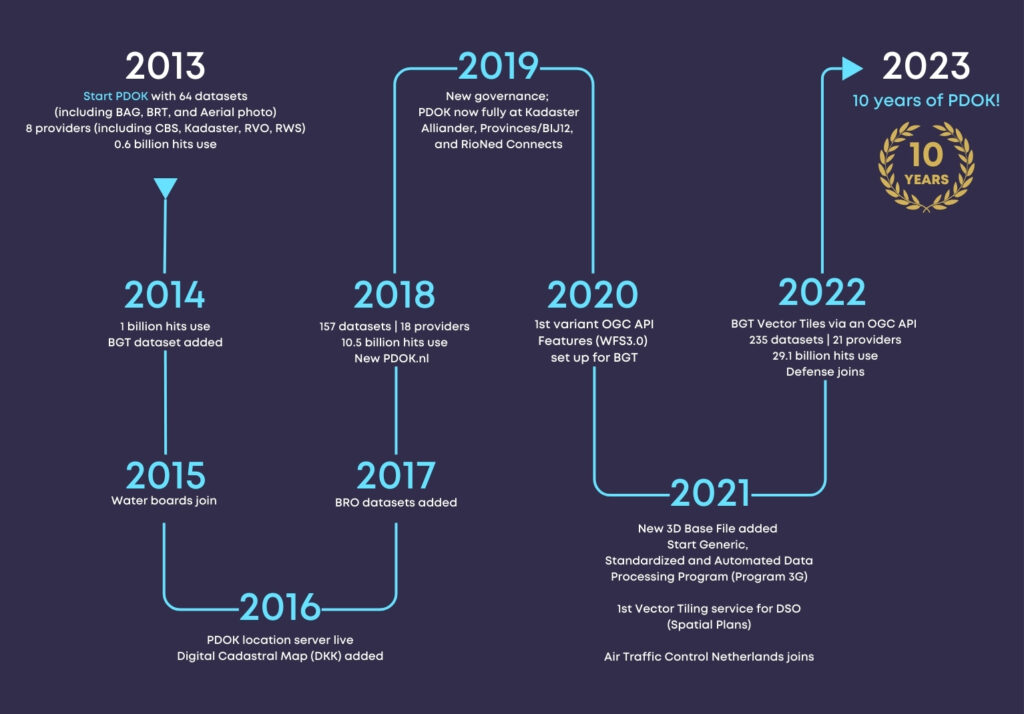 Celebrating 10 years: PDOK’s evolution. (click to enlarge)
Celebrating 10 years: PDOK’s evolution. (click to enlarge)
PDOK was launched in 2013 to make the Dutch government’s geospatial datasets Findable, Accessible, Interoperable, and Reusable (FAIR) as mandated by the EU’s INSPIRE Directive. OGC Standards have been foundational in ensuring that the country’s Spatial Data Infrastructure (SDI) is scalable, available, and responsive.
PDOK serves base maps and Earth Observation data for the whole country. It includes the Key Topography Register (Basisregistratie Topografie, BRT), aerial imagery (updated annually at 8 and 25 cm GSD), and the Large Scale Topography Register (Basisregistratie Grootschalige Topografie, BGT). The BGT is a detailed digital base map (between 1:500 and 1:5,000) that depicts building footprints, roads, water bodies, railways lines, agricultural land, and parcel boundaries. PDOK also serves a 3D dataset of buildings and terrain created from topography (BGT), building footprints (from the Building and Addresses Register or BAG), and height information (from aerial photography).
When PDOK was launched in 2013, it hosted 40 datasets and handled 580 million server requests annually. Today it hosts 210 datasets and handles 30 billion server requests annually—representing a 5,000% increase in service requests being handled by the platform.
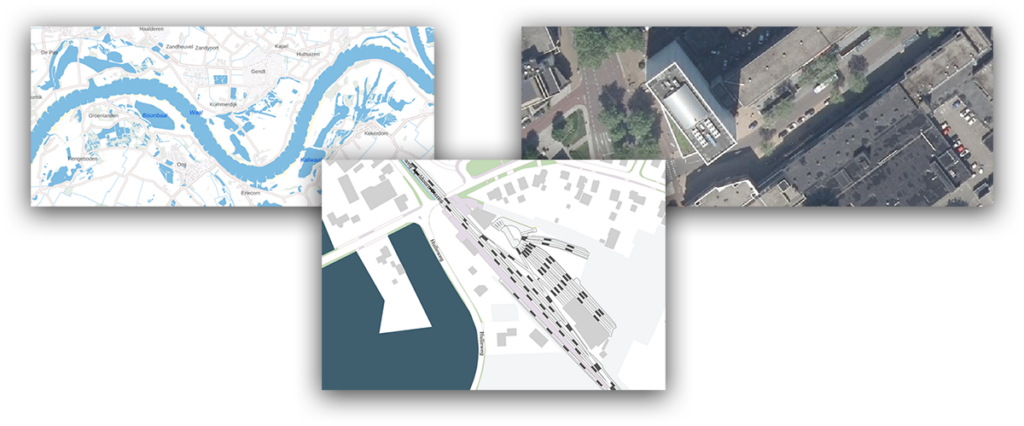 Examples of PDOK basemaps and imagery.
Standards Enabling Success
Examples of PDOK basemaps and imagery.
Standards Enabling Success
The majority of datasets on PDOK are made available using OGC’s popular Web Map Service (WMS) and Web Feature Service (WFS) standards. The BRT is available in three coordinate reference systems (EPSG 28992, EPSG 25831, and EPSG 3857) using the Web Map Tile Service (WMTS) standard.
Kadaster is in the process of transitioning to the newer OGC API Standards, including OGC API – Tiles and OGC API – Features. The most frequently used key registers, like the Building and Addresses Register (BAG), the Large Scale Topography Register (BGT), and the Key Topography Register (BRT) are in the process of being migrated to these newer OGC APIs. The focus is on using OGC API – Tiles, specifically Vector Tiles. For query services the OGC API – Features Standard is used. Although Earth Observation data doesn’t currently use the newer APIs, aerial imagery is available through WM(T)S services, stored as OGC Cloud Optimized GeoTiffs (CoG). 3D Building data is encoded as OGC 3D Tiles and served using the OGC API – 3D GeoVolumes standard.
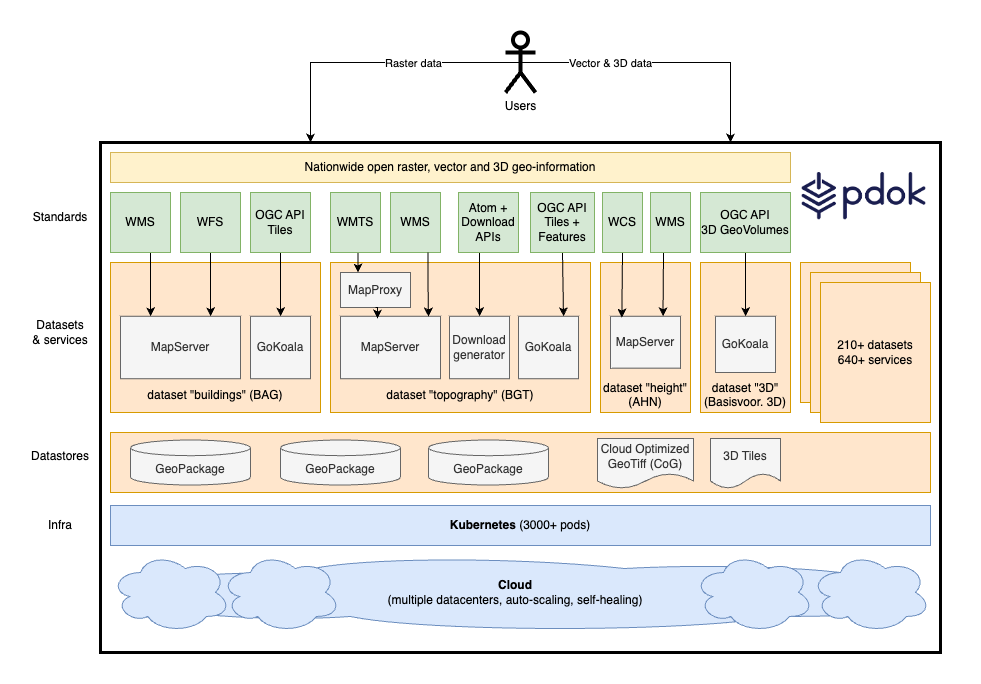 The PDOK architecture and OGC Standards. (click to enlarge)
The PDOK architecture and OGC Standards. (click to enlarge)
By using the newer OGC API Standards, Kadaster has found it significantly easier to handle the large volume of data in its national-scale 3D building dataset (which can be used between scales of 1:500 and 1:10,000) providing an unparalleled, high-resolution perspective of the country’s built environment.
OGC APIs also make it easier to track compute and memory usage on servers, allowing Kadaster to better realize platform scalability and optimize performance.
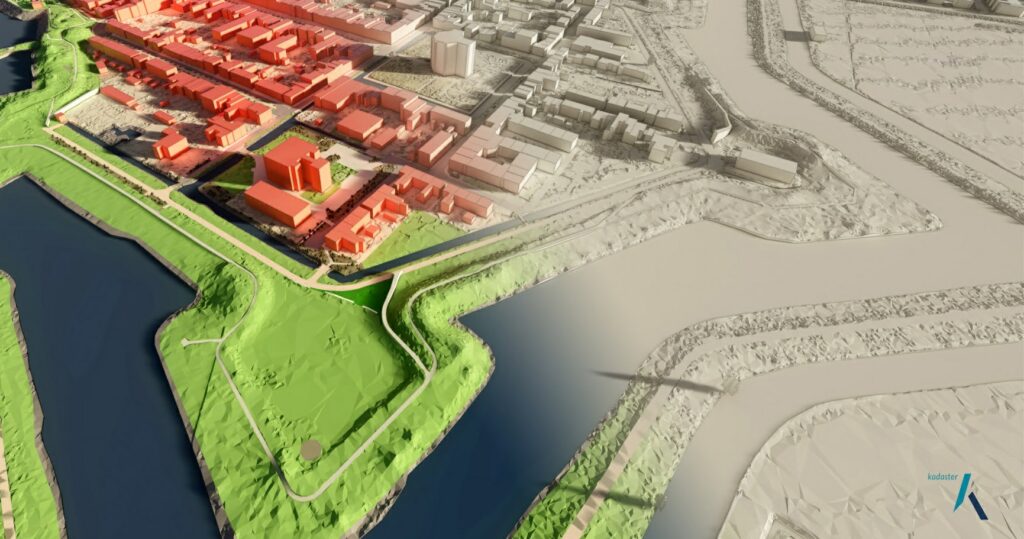 PDOK uses the OGC API – 3D GeoVolumes to serve the 3D building dataset. (click to enlarge)
A Smooth Transition to OGC APIs
PDOK uses the OGC API – 3D GeoVolumes to serve the 3D building dataset. (click to enlarge)
A Smooth Transition to OGC APIs
PDOK processes billions of user requests every month. Transitioning from OGC Web Services Standards to OGC APIs has meant Kadaster is able to efficiently handle the volume of requests it handles today – and can expect to handle in the future.
It took Kadaster little over a month to build their implementation of OGC API – Tiles. Following a short learning curve they were able to build out implementations of OGC API – Features and API – 3D GeoVolumes even faster. By making the move to deliver its geospatial tiles and feature data through an API conformant to the OGC API Standards, Kadaster continues to make government data Findable and Accessible.
PDOK implements what Kadaster calls the 3G principle—Generic (Generic), Geautomatiseerd (Automated) en Gestandaardiseerd (Standardized). This has led to simplified data processing, the automation of many manual processes, a standardization in services, and high standards in service design and operation – while at the same time remaining infrastructure independent. It has streamlined the adoption of new OGC Standards and made it better able to respond to changing user requirements.
Kadaster and OGCBeing an OGC Member allows Kadaster to leverage the collective knowledge of a global network of geospatial experts, while providing Kadaster with opportunities to contribute back to a community driven to use the power of geography and technology to solve problems faced by people and the planet.
Kadaster has recently contributed to the OGC Community by participating in an OGC Code Sprint. These hybrid online/in-person events give participants the opportunity to work on implementations of new or emerging OGC Standards.
Through OGC, Kadaster has also shared their experiences and challenges at OGC Member Meetings, contributing to the ongoing evolution of OGC Standards, Collaborative Solutions and Innovation (COSI) Program Initiatives, and, more broadly, advanced the “state of the art” of geospatial technologies.
The below video provides an overview of PDOK.
The post Public Services on the Map: A Decade of Success appeared first on Open Geospatial Consortium.
-
sur GeoSolutions: GeoSolutions Listed as Certified Cesium Developer
Publié: 7 August 2024, 6:00pm CEST
You must be logged into the site to view this content.
-
sur Mappery: A Tactile Experience in Ilhabela
Publié: 7 August 2024, 11:00am CEST
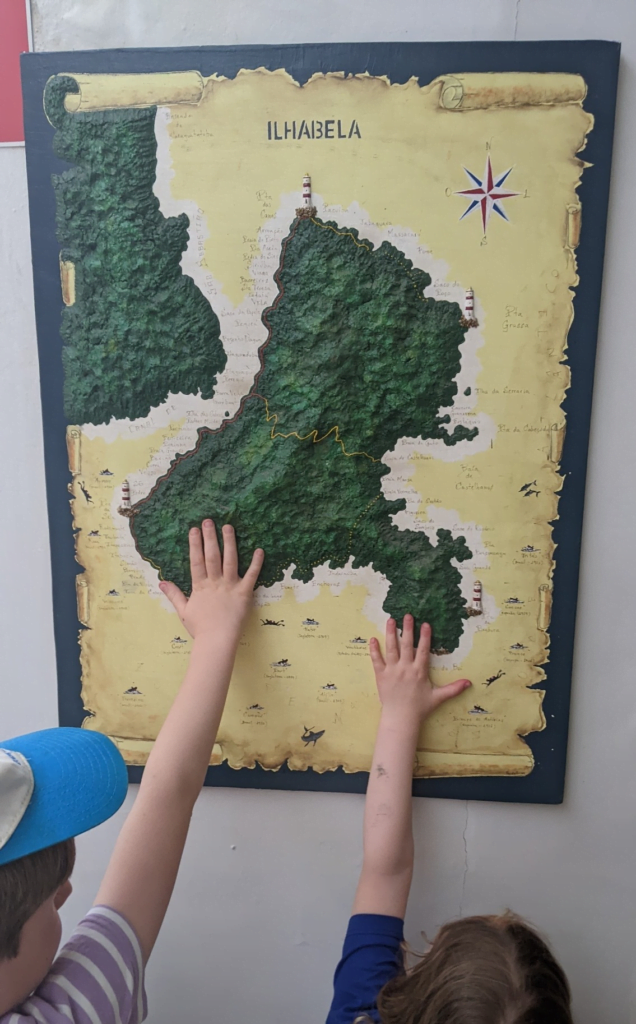
Harry Wood wrote “We arrived at Ilhabela for some Brazil beach time. It’s an island off the Sao Paulo coast. Here’s the kids getting tactile with a relief map in the hotel.”
Looks like fun
MapsintheWild A Tactile Experience in Ilhabela
-
sur The Indoor CO2 Map
Publié: 7 August 2024, 8:09am CEST par Keir Clarke
Over the years I have posted links to a number of interactive maps which visualize the levels of carbon dioxide in the atmosphere. Human activities such as burning fossil fuels, deforestation, and industrial processes help to increase the concentration of CO? in the atmosphere. Higher concentrations of CO? enhance the greenhouse effect, leading to more heat being trapped in the atmosphere.
-
sur Mappery: 30 Minute Walks in Central London
Publié: 6 August 2024, 11:00am CEST

Nick Duggan shared this neat map, not sure where he spotted it.
MapsintheWild 30 Minute Walks in Central London
-
sur Pixel View
Publié: 6 August 2024, 9:04am CEST par Keir Clarke
I've created a simple game using images from Mapillary (and a couple of images from Wikimedia).Mapillary is a crowd-sourced 'Street View' service that allows users to capture, share, and explore street-level imagery from around the world. Developers are allowed to use images submitted to Mapillary under a CC BY-SA 4.0 license. Mapillary 'street view' images can be a great resource for
-
sur Mappery: Watersnood 4
Publié: 5 August 2024, 11:00am CEST
-
sur The Manhole Card Collectors Map
Publié: 5 August 2024, 9:46am CEST par Keir Clarke
In the 1980s as a way to promote local culture and tourism local authorities in Japan began designing distinctive and artistic manhole covers. Each municipality often has its own unique manhole cover designs, featuring local landmarks, historical events, flora, fauna, and other culturally significant symbols. In Sumida Ward in Tokyo you can find a man hole cover featuring "The Great
-
sur Mappery: Watersnood 3
Publié: 4 August 2024, 11:00am CEST
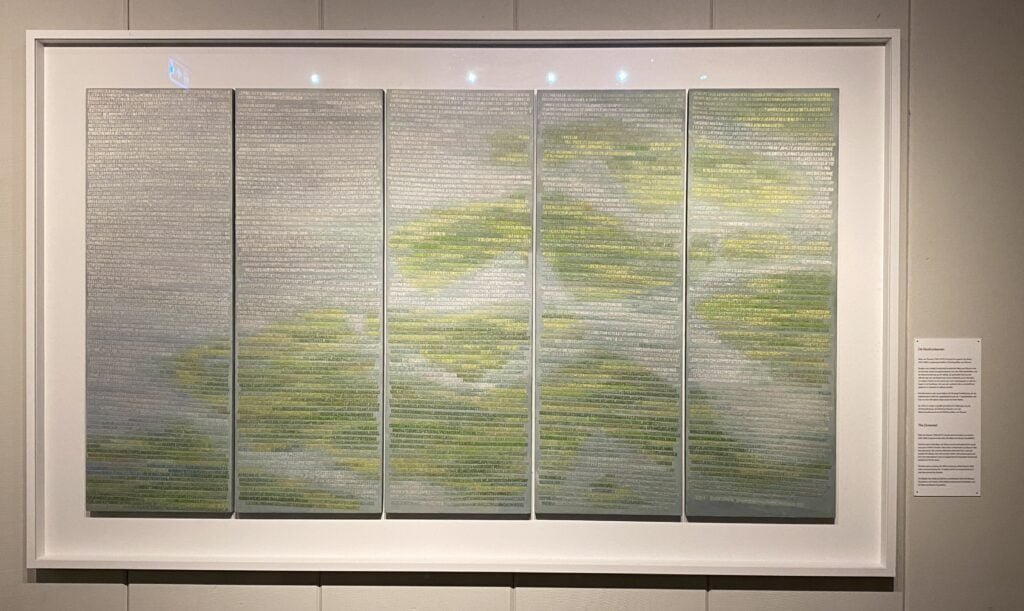
Via Reinder “This fantastic piece of textile art by Miep van Riessen consists of embroidered names of victims, and is at the same time a quite adequate ‘geographical impression’ of the region where the disaster took place: the Dutch province of Zeeland. “
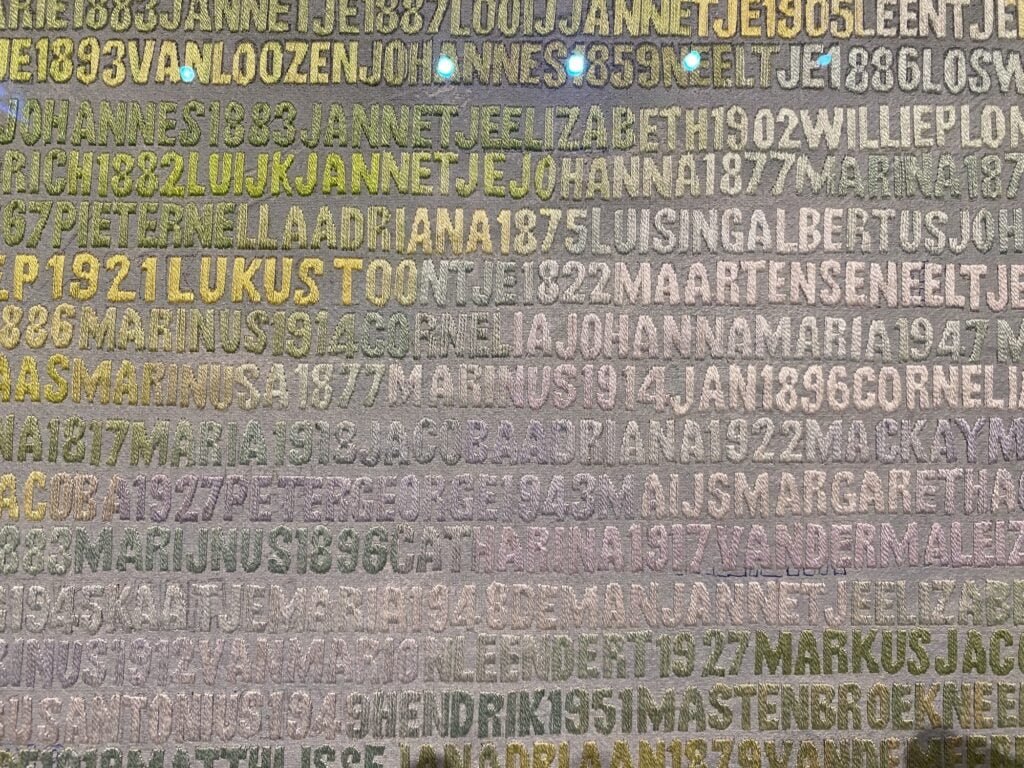
MapsintheWild Watersnood 3
-
sur Mappery: Watersnood 2
Publié: 3 August 2024, 11:00am CEST
-
sur Exploring London Through the Artist's Eye
Publié: 3 August 2024, 10:33am CEST par Keir Clarke
"... this tide is always moving! Always! When all those people we now see in such activity are in their graves, the same hurried activity will still continue here ..." - Hans Christian AndersenWhen Hans Christian Andersen visited London in June 1847 he was obviously impressed by the pace of London life. In his autobiography he called the English capital,"London, the city of cities! ... Here is
-
sur GeoServer Team: Using Binary Comparison Operators in GeoServer Filters
Publié: 3 August 2024, 2:00am CEST
GeoSpatial Techno is a startup focused on geospatial information that is providing e-learning courses to enhance the knowledge of geospatial information users, students, and other startups. The main approach of this startup is providing quality, valid specialized training in the field of geospatial information.
( YouTube | LinkedIn | Facebook | X )
Binary Comparison Operators in GeoServer FiltersIn this session, we want to talk about the various types of filters, with a particular focus on “Binary comparison operators in GeoServer” comprehensively. If you want to access the complete tutorial, click on the link.
IntroductionFiltering allows the selection of features that satisfy a specific set of conditions. Filters can be used in several contexts in GeoServer:
- In WMS requests, select which features should be displayed on a map
- In WFS requests, specify the features to be returned
- In SLD documents, apply different symbolizations to features on a thematic map
Note. This video was recorded on GeoServer 2.22.4, which is not the most up-to-date version. Currently, versions 2.24.x and 2.25.x are supported. To ensure you have the latest release, please visit this link and avoid using older versions of GeoServer.
Supported filter languagesData filtering in GeoServer follows the OGC Filter Encoding Specification, which provides a standard XML schema for encoding spatial, attribute, and temporal filters in GIS. This allows for customized queries to retrieve specific data from databases and web services while ensuring interoperability among GIS applications. GeoServer supports filters in both Filter Encoding Language and Common Query Language.
Filter Encoding LanguageThe Filter Encoding language, defined by OGC standards, utilizes an XML-based syntax to select specific features, similar to the “WHERE” clause in SQL. A filter consists of a condition formed by Predicate elements and Logical operators, employing comparison and spatial operators to evaluate relationships between feature properties. In this session, we will explore various types of binary comparison operators, while the next sessions will cover spatial operators.
Common Query LanguageCommon Query Language (CQL) is a Text-based language used in GeoServer for constructing filters and queries on geospatial data. It provides flexible and powerful options for filtering and retrieving specific subsets of data from GeoServer layers. In the upcoming sessions, we will dive into a detailed exploration of CQL/ECQL, covering its various operations and practical usage.
Comparison operatorsThese operators are part of Filter Encoding operators and are used in attribute-based queries to filter and retrieve specific features or data, based on their non-spatial attributes. The comparison operators include: binary comparison operators and value comparison operators.
The binary comparison operators are:
- PropertyIsEqualTo
- PropertyIsNotEqualTo
- PropertyIsLessThan
- PropertyIsLessThanOrEqualTo
- PropertyIsGreaterThan
- PropertyIsGreaterThanOrEqualTo
These operators contain two filter expressions to be compared. The first operand is often a
<PropertyName>, but both operands may be any expression, function or literal value. Binary comparison operator elements may include an optional matchCase attribute, with the true or false value. The default value is true, but the comparisons do not check the case if the attribute has a false value.Note. String comparison operators are case-sensitive.
PropertyIsEqualToPropertyIsNotEqualTo is a common type of filter used in GeoServer, which allows you to retrieve features from a data source based on the values of one or more properties. As an example of using this filter in WFS getFeature request:
- Navigate to the Demos page, then select Demo requests.
- From the Request section, select the WFS_getFeature1.0.xml request.
- The address will be filled in automatically, in the URL section.
Use the following block codes to replace line 26:
<PropertyIsEqualTo> <PropertyName>STATE_NAME</PropertyName> <Literal>Delaware</Literal> </PropertyIsEqualTo>- Now, we will explain some elements:
- The first fifteen lines include explanations in the form of comments.
- Line 16 describes the XML version and the GetFeature operation of the WFS service being used.
- Line 17 specifies the default output format for the WFS service as “gml2.” Additionally, GeoServer supports several other commonly used formats such as “gml3, shapefile, geojson, and csv.”
- Lines 18 to 23 define the start of the XML request and declare the namespaces used in the request.
- Line 24 specifies the type name of the feature to be queried. In this case, it requests features of the “topp:states”.
- Lines 25 to 30 define the filter criteria for the query. On these lines, we use the PropertyIsEqualTo filter, to retrieve all features where the state name attribute is equal to
Delaware.
-
Press the Submit button to see the implemented changes.
- Note. For GeoServer 2.25.2 the Demo Request page has been improved to show response Headers, and provide the option to pretty print XML output.
PropertyIsNotEqualTo is another common type of filter used in GeoServer, which allows you to retrieve features from a data source based on properties that don’t match a specified value. As an example of using this filter in a WFS getFeature request, use the following block codes to replace lines 26 to 29:
<PropertyIsNotEqualTo matchCase="false"> <PropertyName>STATE_NAME</PropertyName> <Literal>delAwarE</Literal> </PropertyIsNotEqualTo>Note. The matchCase attribute in WFS_getFeature 1.1 and 2.0 versions, can be set to “false” to specify a case-insensitive comparison.
Press the Submit button.
In this example, we used the
PropertyIsLessThan<PropertyIsNotEqualTo>filter to retrieve all features where theSTATE_NAMEattribute, is not equal toDelaware.The PropertyIsLessThan filter is used to filter features, based on a comparison of a numeric property with a given value. It returns all features where the specified property is less than the specified value.
An example of using this filter in a WFS getFeature request is:
outputFormat="shape-zip" <wfs:Query typeName="topp:states"> <wfs:PropertyName>topp:STATE_NAME</wfs:PropertyName> <wfs:PropertyName>topp:LAND_KM</wfs:PropertyName> <ogc:Filter> <PropertyIsLessThan> <PropertyName>STATE_FIPS</PropertyName> <Literal>18</Literal> </PropertyIsLessThan> </ogc:Filter>Press the Submit button.
In this example, we used the
<PropertyIsLessThan>filter to get all features in a shapefile format where the value of theSTATE_FIPSattribute is less than18. The query only retrieves theSTATE_NAMEandLAND_KMfields, instead of all the attributes.In this session, we took a brief journey through the various types of filters, with a particular focus on “Binary comparison operators in GeoServer”. If you want to access the complete tutorial, simply click on the link.
-
sur From GIS to Remote Sensing: Semi-Automatic Classification Plugin major update: version 8.3.0
Publié: 3 August 2024, 12:04am CEST
The Semi-Automatic Classification Plugin (SCP) has been updated to version 8.3.0.This new version requires Remotior Sensus to be updated to at least version 0.4.0.
During the update process of SCP from version 7 to version 8, several tools were excluded in order to give priority to the main plugin functions.With this 8.3.0 update, several tools are reintroduced, such as Clustering tool for unsupervised classification (K-means method), the Spectral distance tool, the Edit raster tool, and the Raster zonal stats.Read more » -
sur WhereGroup: Kick-off für die Entwicklung eines bundesweiten Softwaretools für mehr Klimaschutz in der Baubranche
Publié: 2 August 2024, 12:15pm CEST
Schon 2016 waren wir auf Landesebene im Bereich Ersatzbaustoffverordnung tätig und sind nun vom BMUV mit dem Umweltbundesamt mit der Erstellung eines bundesweiten Ersatzbaustoff-Katasters beauftragt. -
sur GRASS GIS: Report from the GRASS Community Meeting 2024
Publié: 2 August 2024, 11:42am CEST
The annual GRASS GIS Community Meeting was held once again in the Czech Republic, this time at the NC State European Center in Prague from June 14 to 19. The meeting brought together users, supporters, contributors, power users and developers to collaborate and chart the future of the project. Thanks to the generous funding from the U.S. National Science Foundation (Award 2303651), the Open Source Geospatial Foundation (OSGeo), FOSSGIS e.V., and individual donors, we were able to welcome 16 in-person participants from 9 countries on 3 continents, plus 2 remote participants. -
sur Mappery: Watersnood 1
Publié: 2 August 2024, 11:00am CEST

Reinder shared this “On the 1st of February 1953 a disastrous flood occurred in the southwest of The Netherlands. More than 1800 people lost their lives and an entire infrastructure was devastated. This is known as the Watersnood, and it is the topic of the Watersnoodmuseum in Ouwerkerk in the province of Zeeland.”
MapsintheWild Watersnood 1
-
sur The Olympic Medals Map
Publié: 2 August 2024, 9:20am CEST par Keir Clarke
In the past seven days you've almost definitely seen numerous tables of Olympic medal winners. Now it is time to view the map.Giorgio Comai creates interactive maps of Olympic Medal winners based on which NUTS region they were born in. This means that you can look past the traditional country led rankings used in most Olympic medal tables to explore the medals won by different regions.
-
sur Mappery: Custom underwear
Publié: 1 August 2024, 11:00am CEST
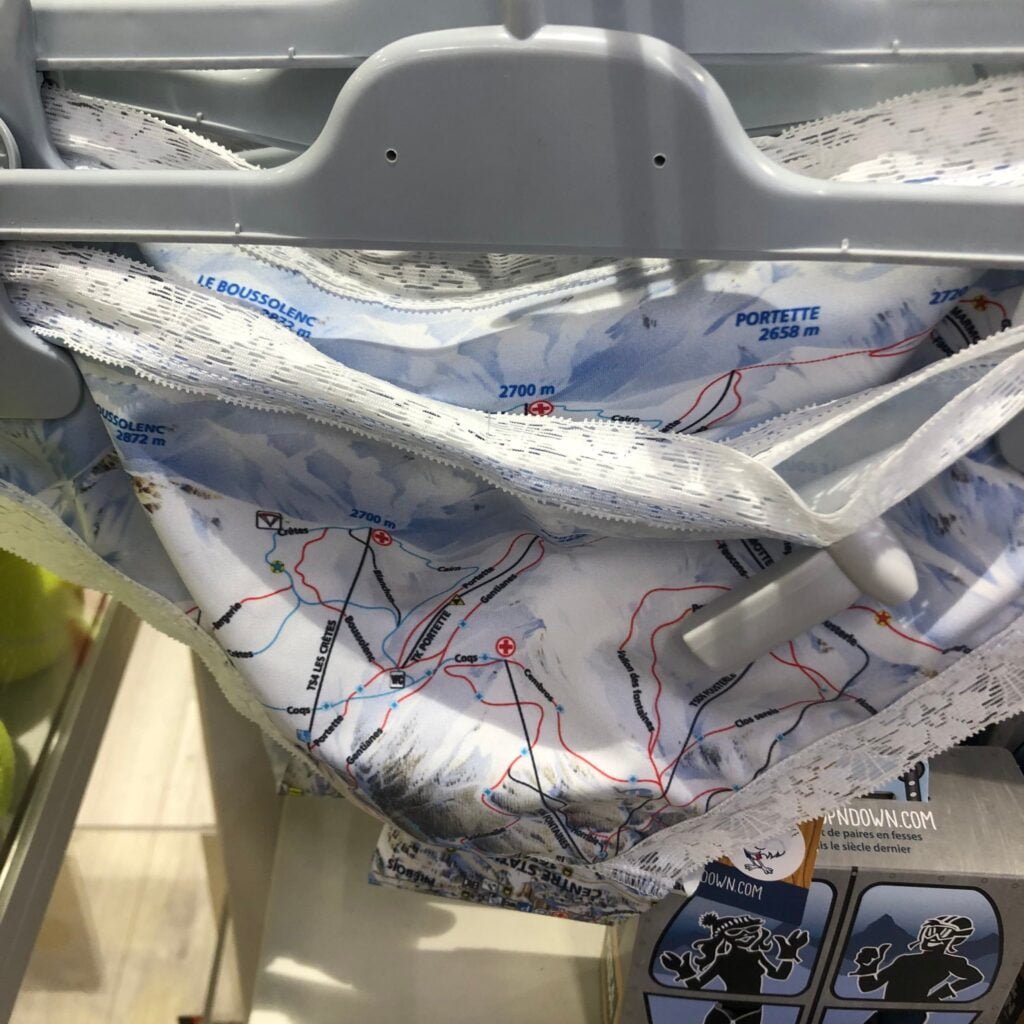
And a new share from LeCatopgrahe with these custom underwear coming from Hop & Down.
MapsintheWild Custom underwear
-
sur 170 Years of American Immigration
Publié: 1 August 2024, 8:54am CEST par Keir Clarke
The Pew Research Center has analysed census data to map the changes in the immigrant population over the last 170 years. An animated map in How America’s source of immigrants has changed over time shows the top country of birth of immigrants in each state from every census since 1850 (except 1890 - the census data for this year was destroyed in a fire).The animated map clearly illustrates the
-
sur GeoServer Team: GeoServer User Forum replaces mailing list
Publié: 1 August 2024, 2:00am CEST
GeoServer is updating our communication channels!
We know people do not like signing up for mailing lists, Twitter has been Xed out, and it is time to move on.
GeoServer User ForumWelcome to the GeoServer User forum:
- This forum is open to the public, we are pleased to meet you and hope you enjoy using GeoServer.
- Hosted by Open Source Geospatial Foundation
- All project communication including this forum are subject to our code of conduct
- This is one of many options for community support and communication.
Taking part is easy (sign-in with credentials you already have):
-
Login to discourse.osgeo.org:
-
Login “with LDAP” to use your OSGeo UserID (also used for other osgeo services).
The button appears greyed out, but this is only poor styling choice. The button is enabled and works.
-
Use “Log in with GitHub” to use GitHub credentials.
-
More options are added over time.
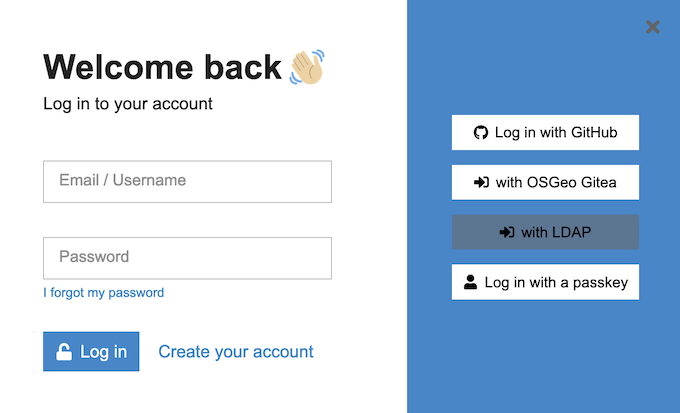
-
-
You may also use “Sign Up” if you want to create an account just for use with the Forum.

-
Unsubscribe from geoserver-users email list.
We will continue to operate the geoserver-user list for the month of August, and then do a final synchronization of any outstanding email messages to complete the migration.
-
Navigate to the category GeoSever / User to enjoy the forum.
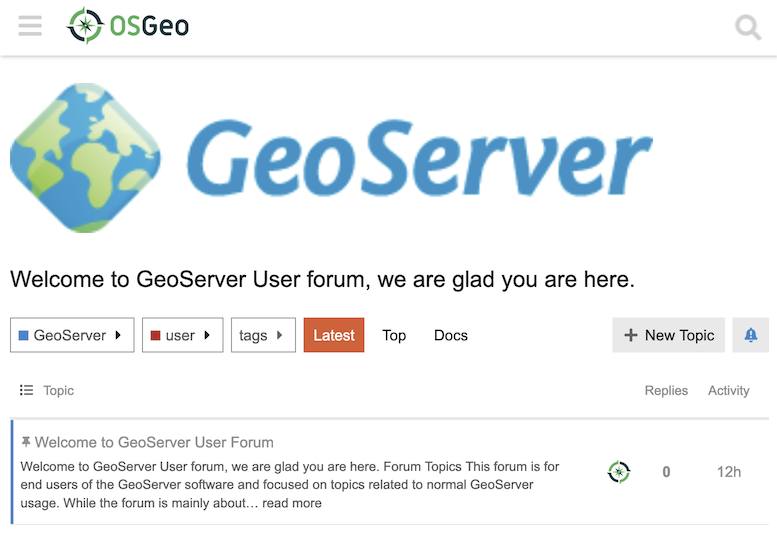
-
Use New Topic to start a new conversation.
Only the
GeoServer / usersubcategory allows new topics. If the New Topic button is disabled you may be looking at theGeoServertop-level category. -
To test please send introduce yourself we are looking forward to meeting you.
If you enjoy the out-of-band timezone friendly mailing list experience - Discourse allows you to subscribe to notifications, and use email to post and reply to topics.
-
Sign-in to Discourse as above.
-
From your profile preferences, use the email tab to adjust email settings.
IMPORTANT: Email is only sent when you are not logged in to the discourse website!
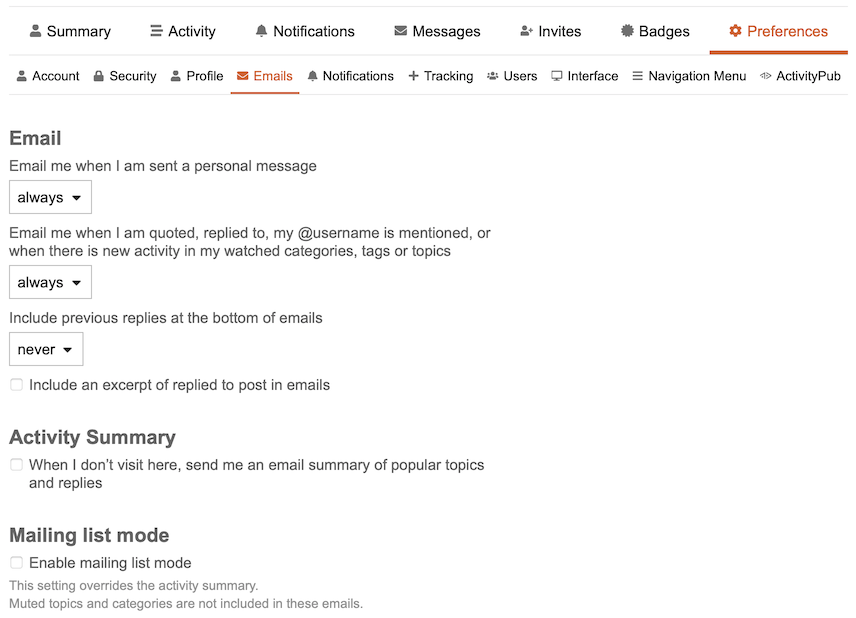
-
Navigate to GeoSever User category, and use the bell to change notifications to Watching.

-
If you wish to update any email rules the new mailing is
user.geoserver.discourse.osgeo.org -
You can send email to geoserver-user@discourse.osgeo.org to start a new topic.
To test please send an email to introduce yourself (rather than a test message).
GeoServer is occasionally active on social media:
- Mastadon: @geoserver@fosstodon.org
- LinkedIn Group
- Twitter/X: @GeoServerO - only used for emergencies.
If you enjoy social media we would love some assistance reposting and highlighting our community activity. Contact us on your preferred social media platform to help out.
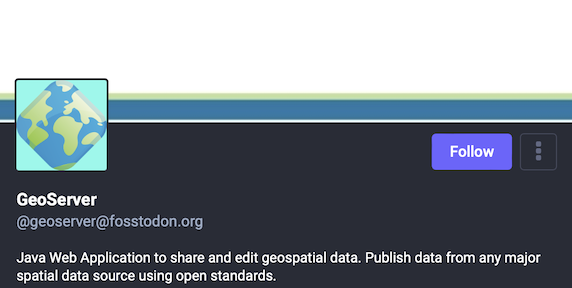
-
sur Mappery: World T-Shirt
Publié: 31 July 2024, 11:00am CEST
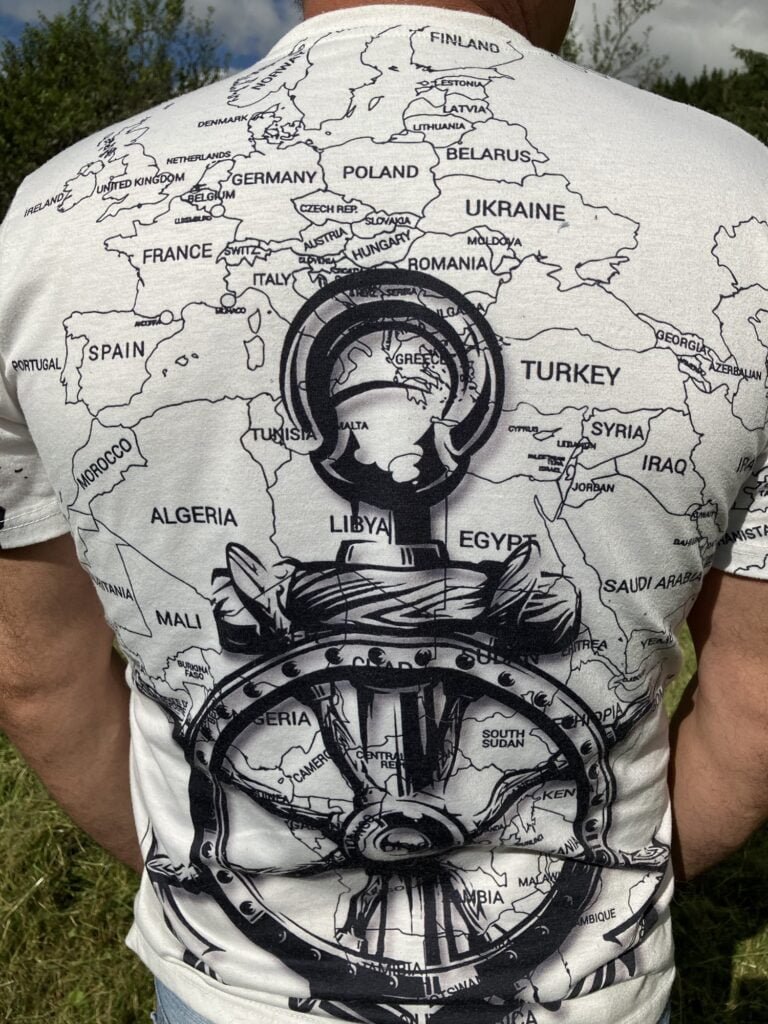
How a mechanical issue leads to a new map in the wild. Back home, I had a problem with a lawn mower. I called a friend for help, who finally came with this fabulous T-shirt!
MapsintheWild World T-Shirt
-
sur The Best Graphics Team in the World
Publié: 31 July 2024, 8:39am CEST par Keir Clarke
The Straits Times has the best graphics department in the world - probably. The Washington Post and New York Times might be contenders but because of their paywalls most of their work is hidden away from most of the world.The latest astonishing demonstration of the graphic skills of the Straits Times comes in an article celebrating the 100 year anniversary of the construction of the
-
sur GeoSolutions: GeoSolutions Announces Membership in World Geospatial Industry Council
Publié: 30 July 2024, 6:19pm CEST
You must be logged into the site to view this content.
-
sur Mappery: Cup Cakes from Mont-Ral
Publié: 30 July 2024, 11:00am CEST
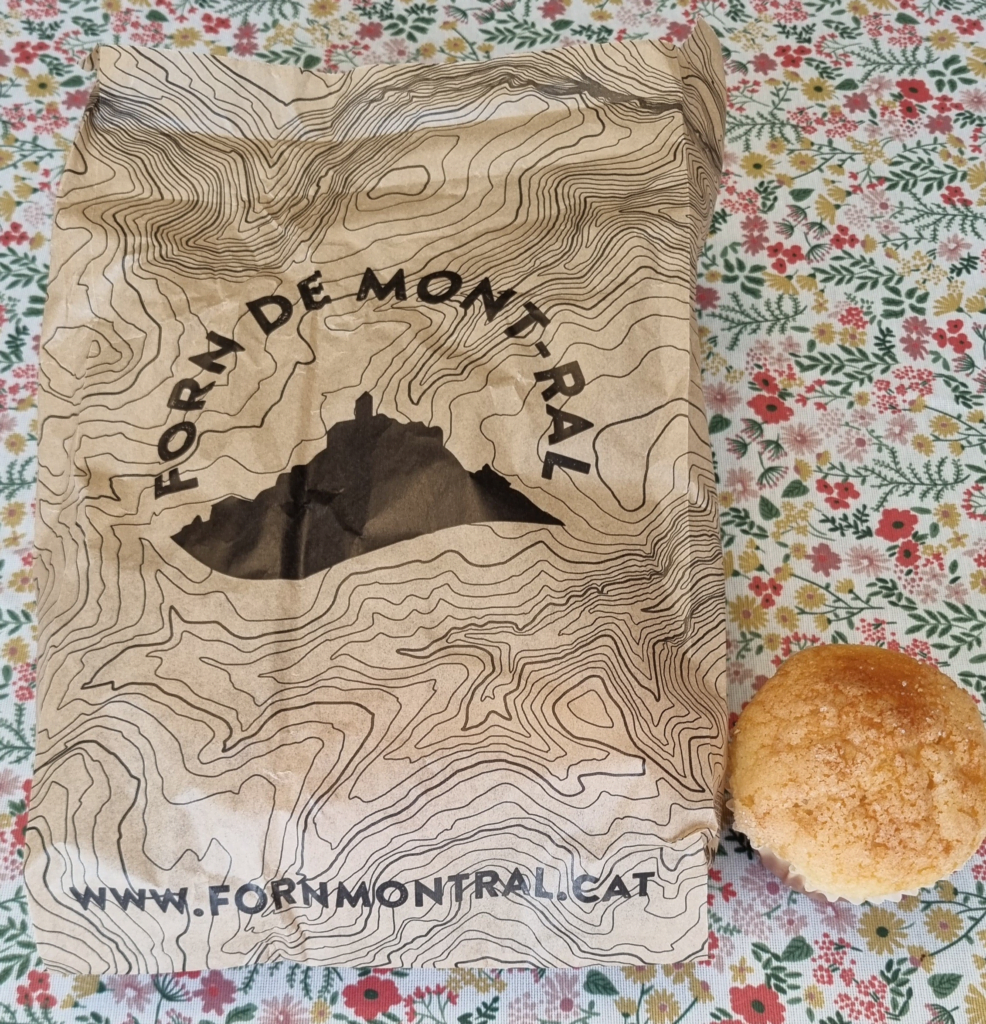
Raf shared this “Tasty cupcakes from Forn de Mont-ral, Prades, Catalunya”
MapsintheWild Cup Cakes from Mont-Ral
-
sur Rat-Town, Massachusetts
Publié: 30 July 2024, 10:36am CEST par Keir Clarke
A new interactive map of Boston seems to indicate that Beantown has become Rat-town. Rats! Boston shows rat sightings around the Massachusetts city made by concerned citizens.Self-appointed Rat Czar Viviano Cantu is using 311 reports to map all the recent sightings of rats around Boston. The sightings are taken from non-emergency 311 calls to the city. The Rats! Boston map also shows the
-
sur Markus Neteler: Happy 41st birthday, GRASS GIS!
Publié: 29 July 2024, 11:01am CEST
Today, we celebrate a true geospatial legend: GRASS GIS!
The post Happy 41st birthday, GRASS GIS! appeared first on Markus Neteler Consulting.









